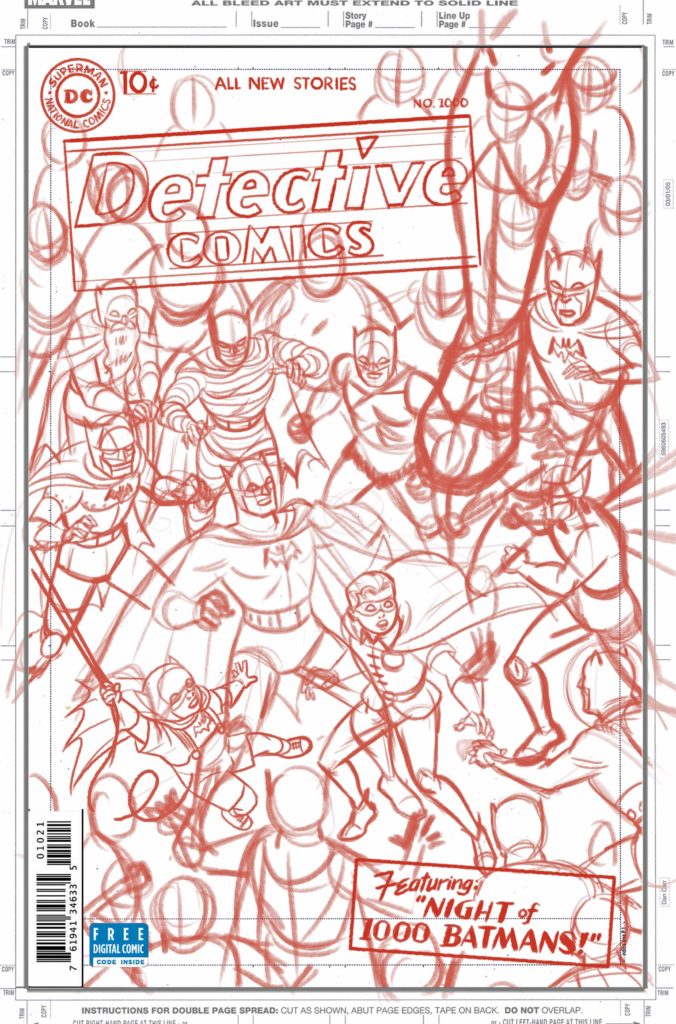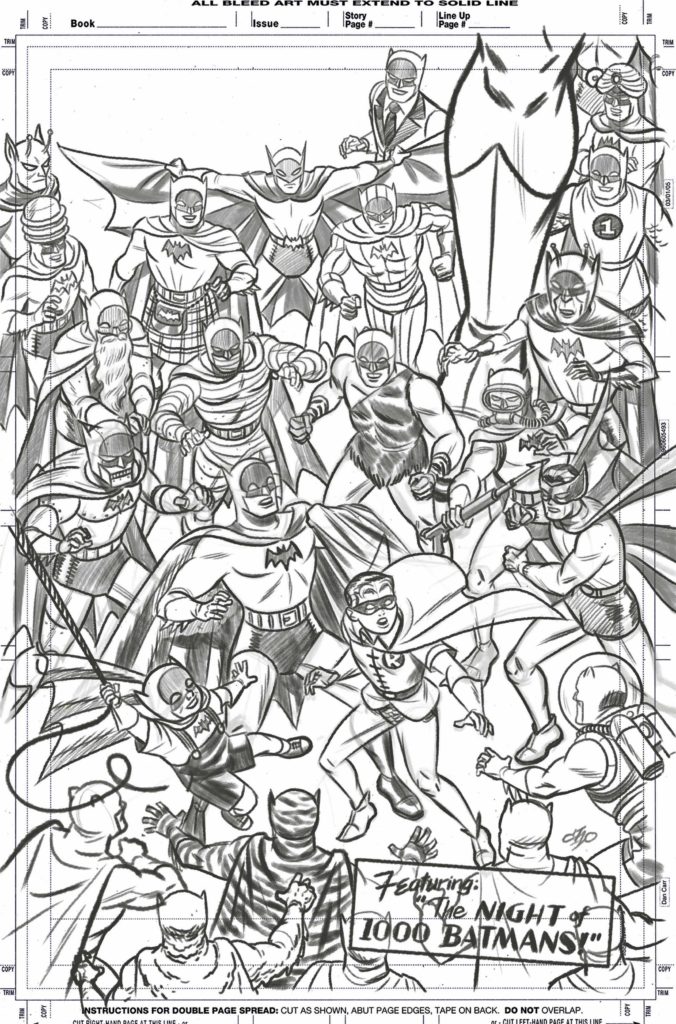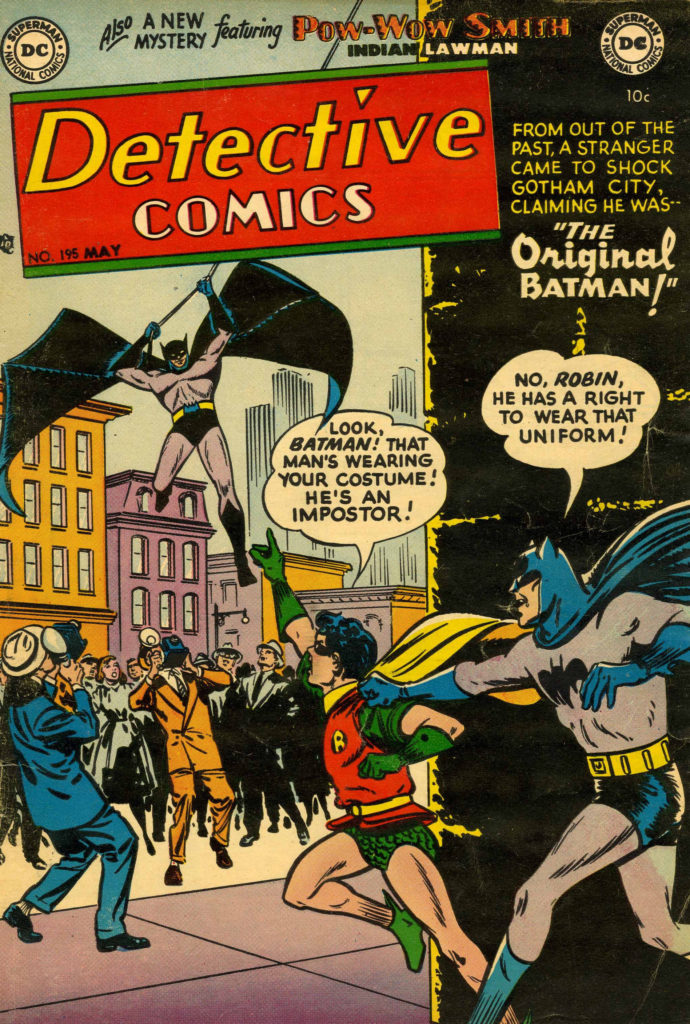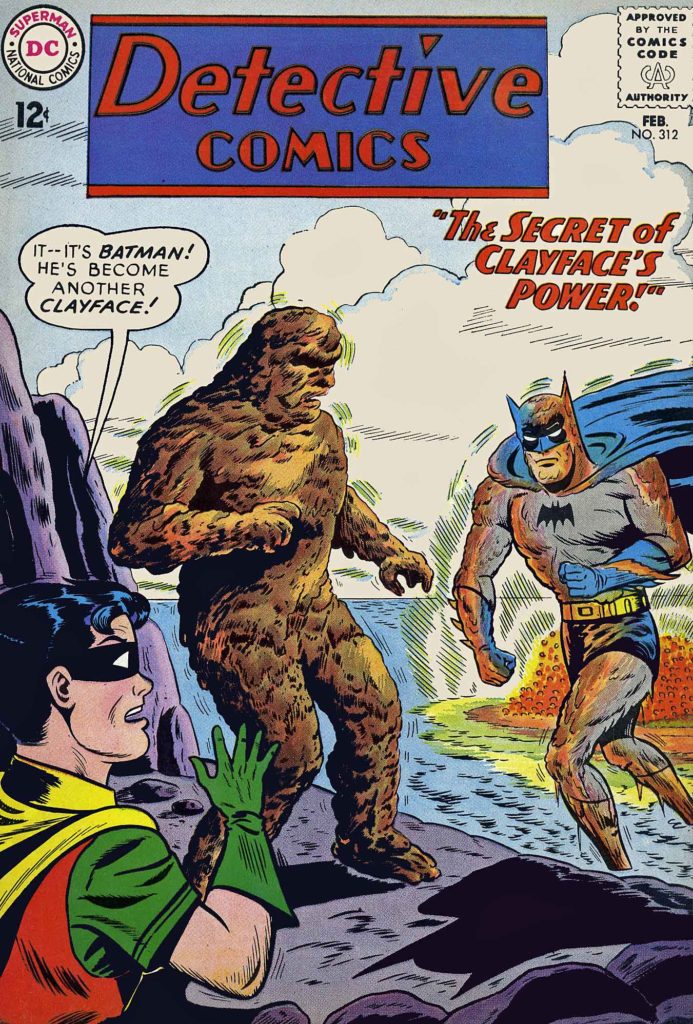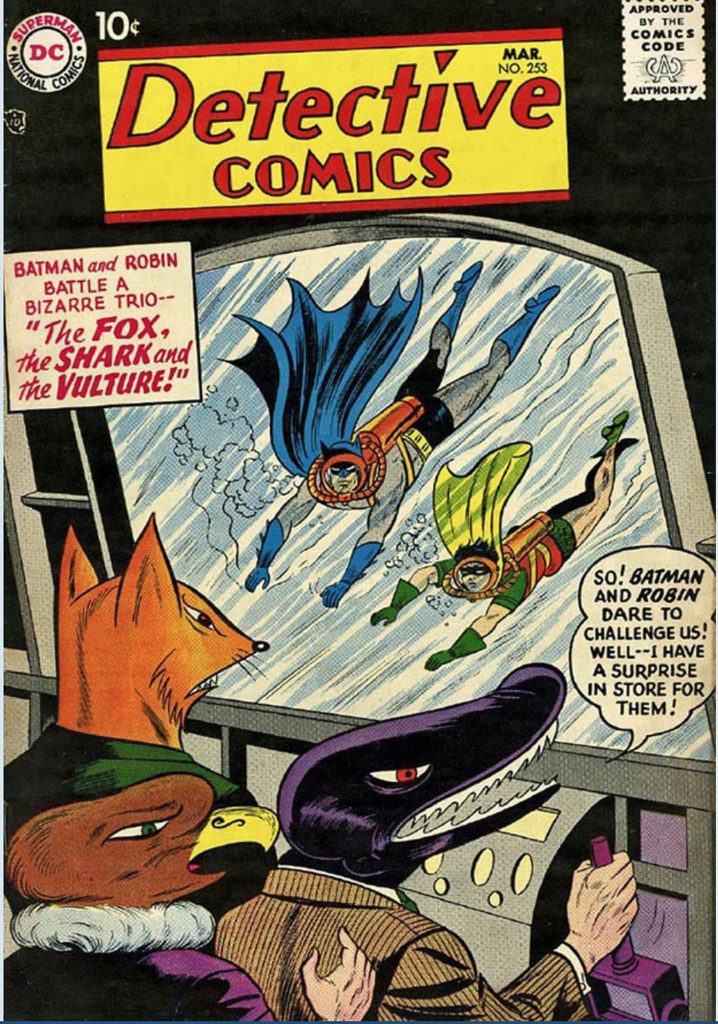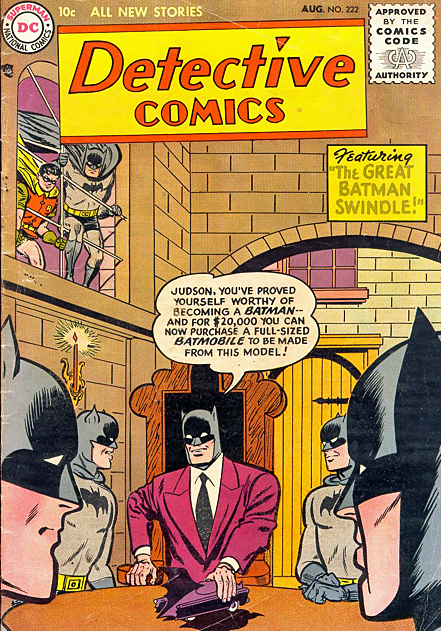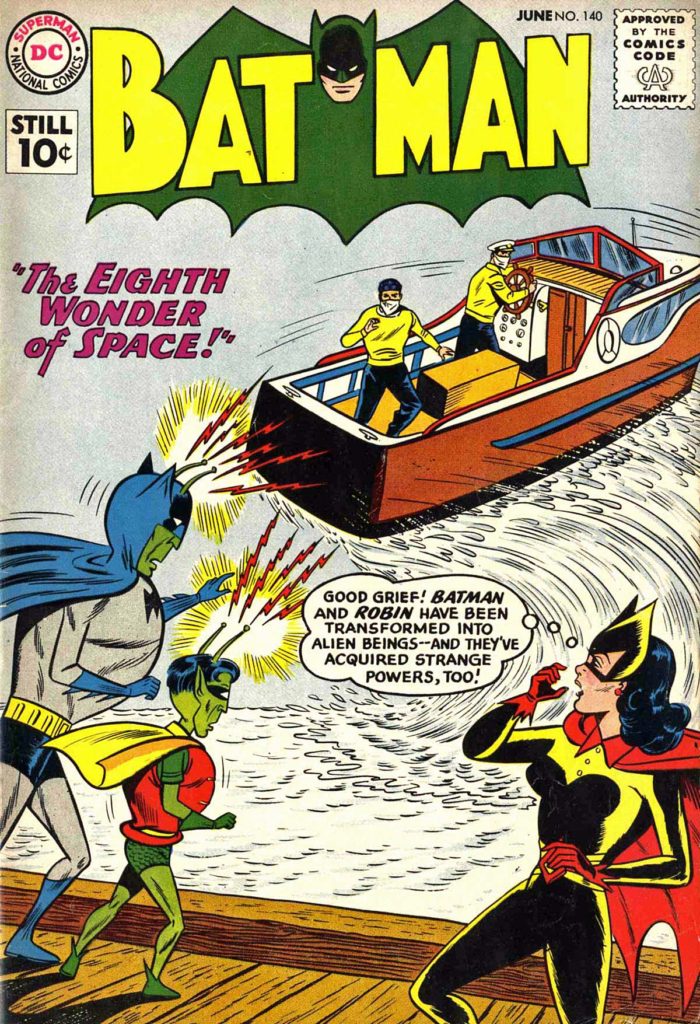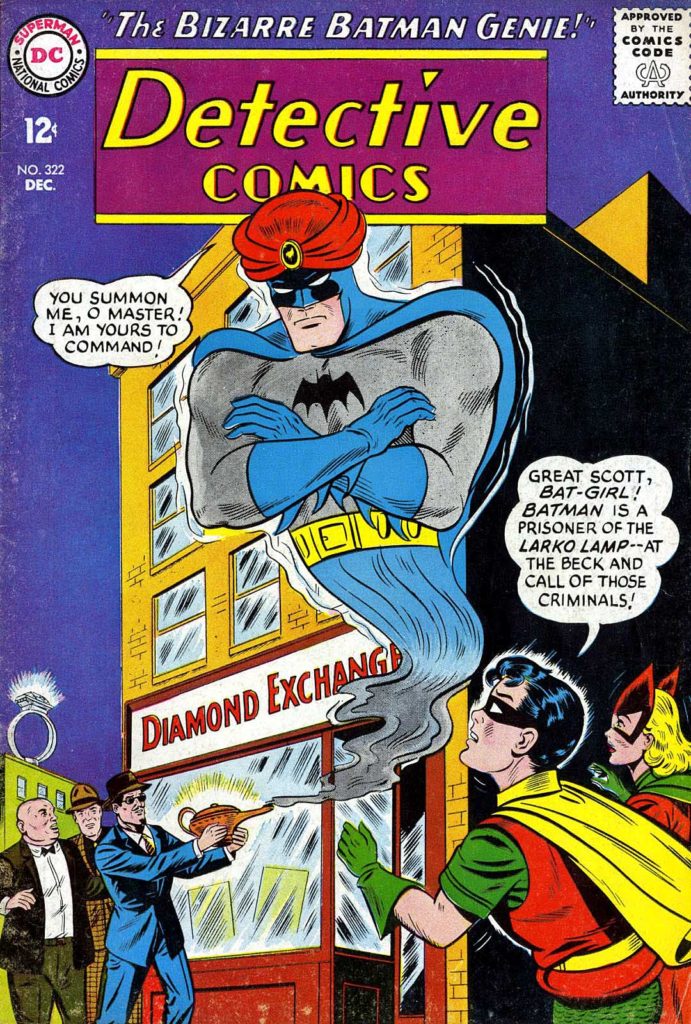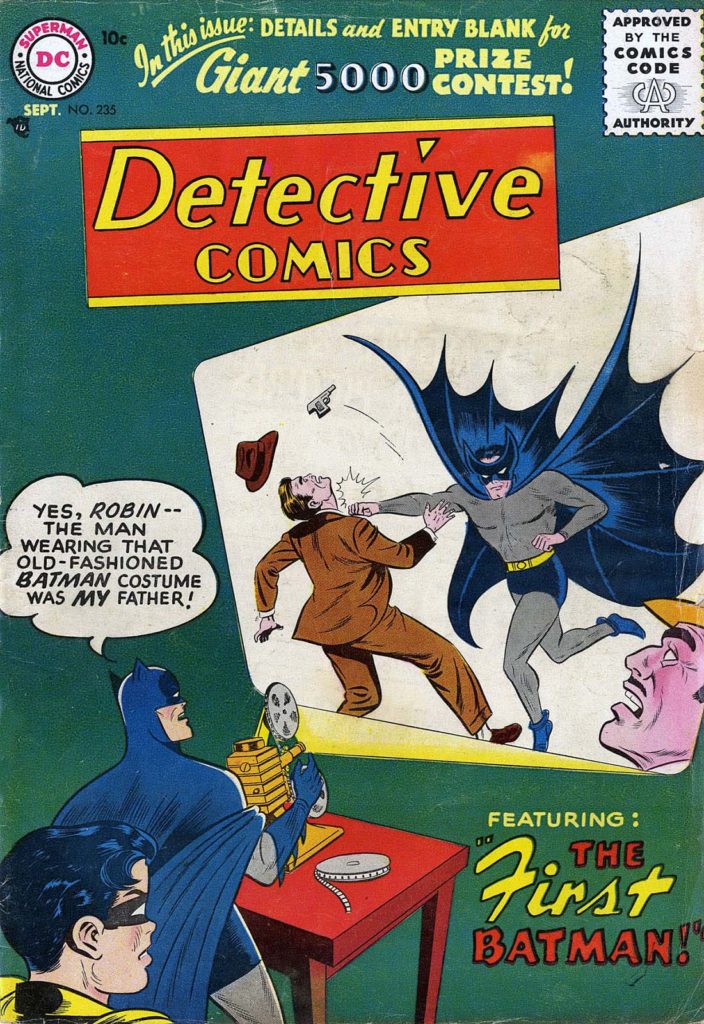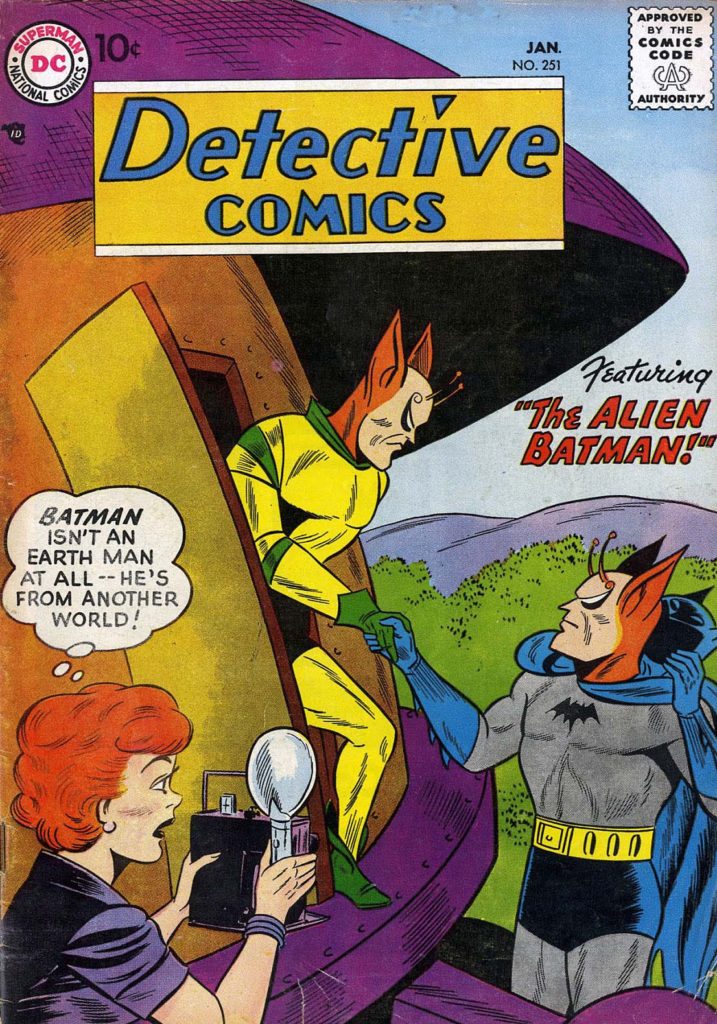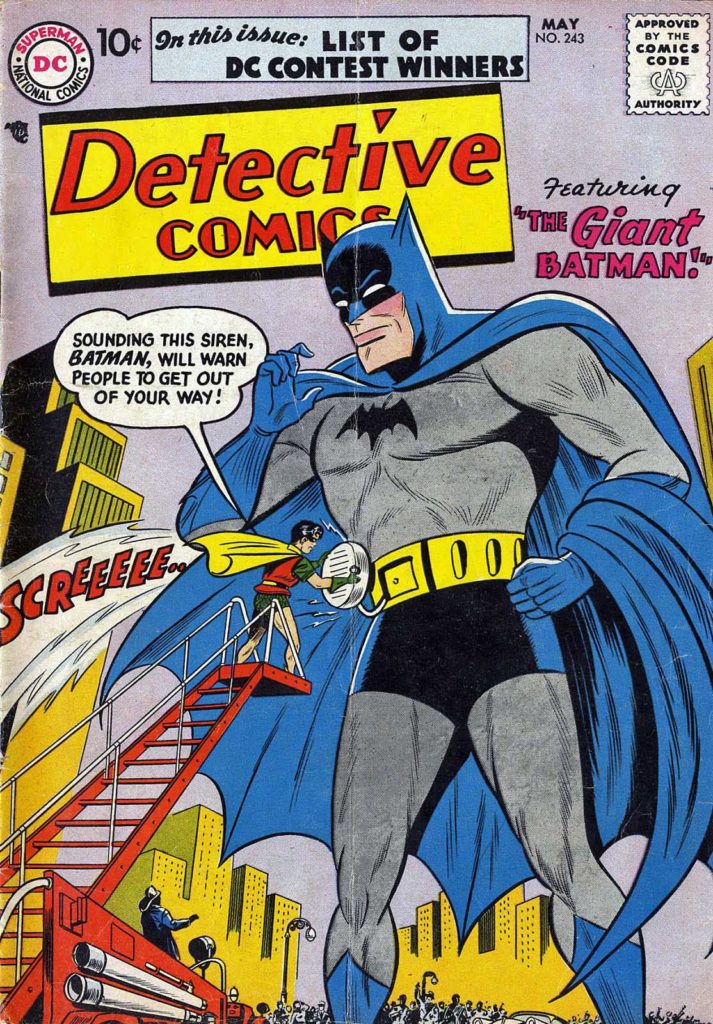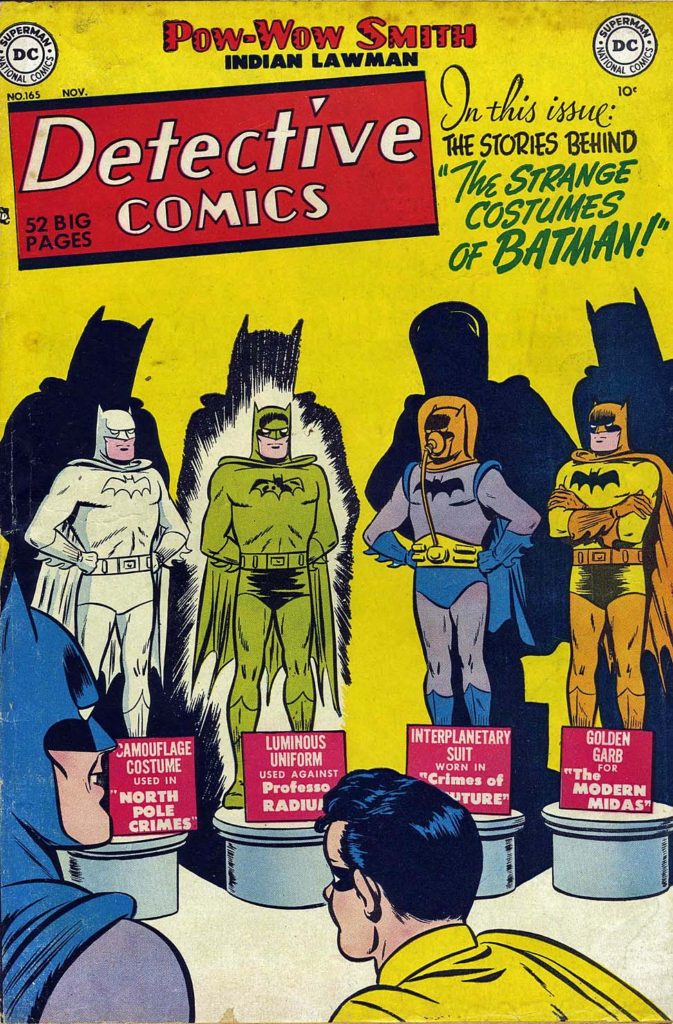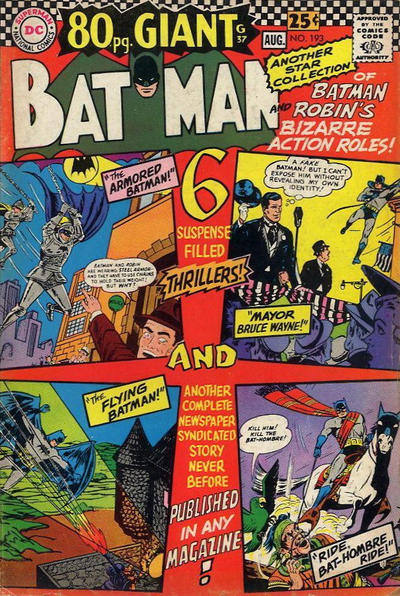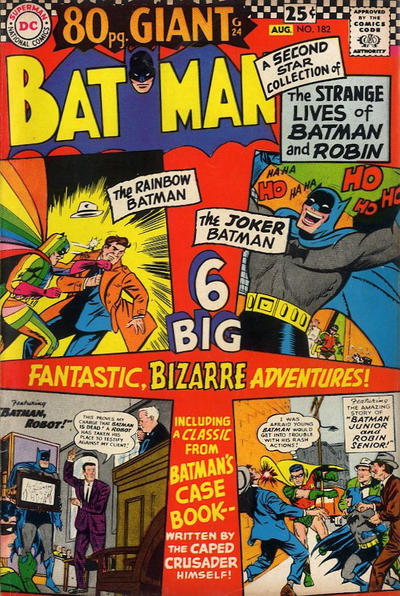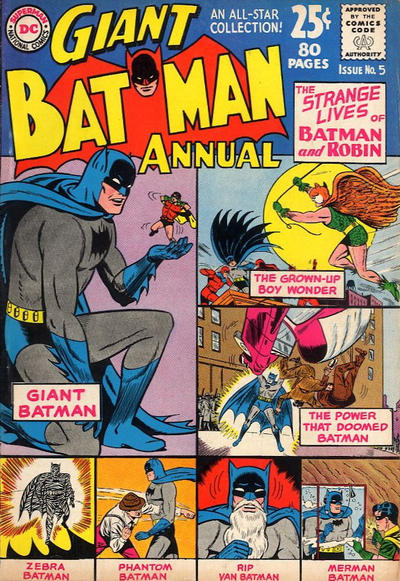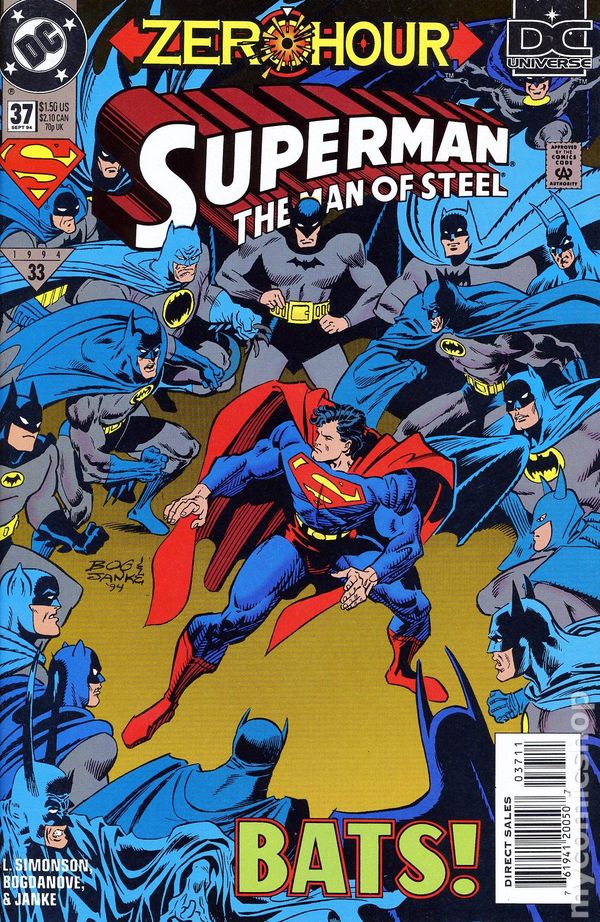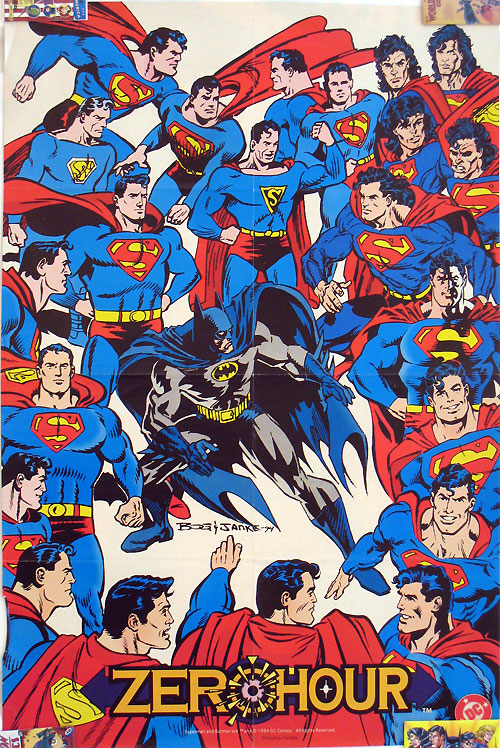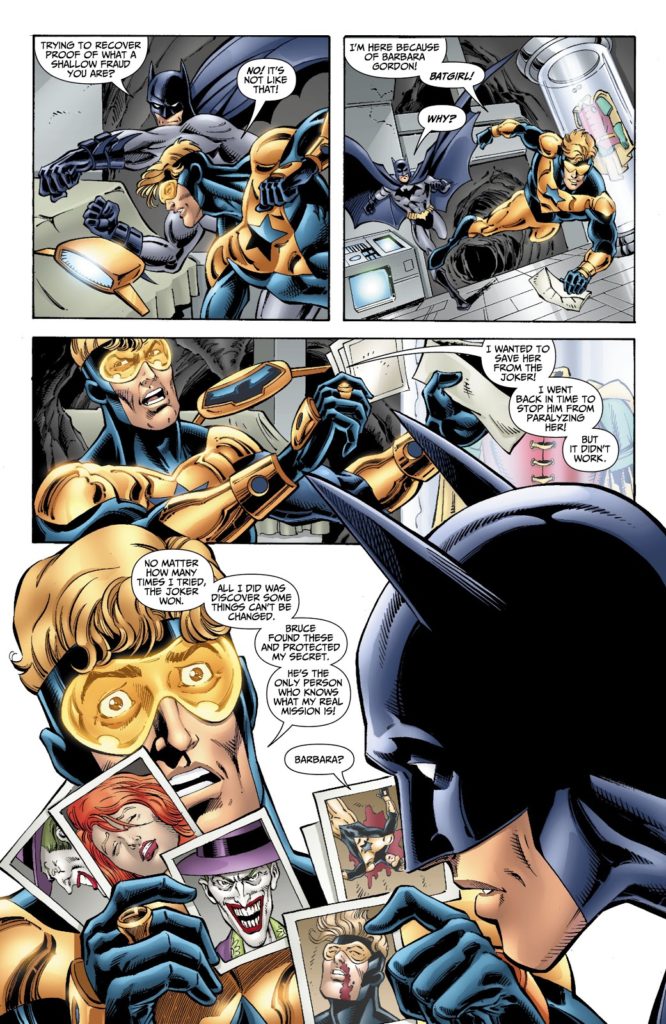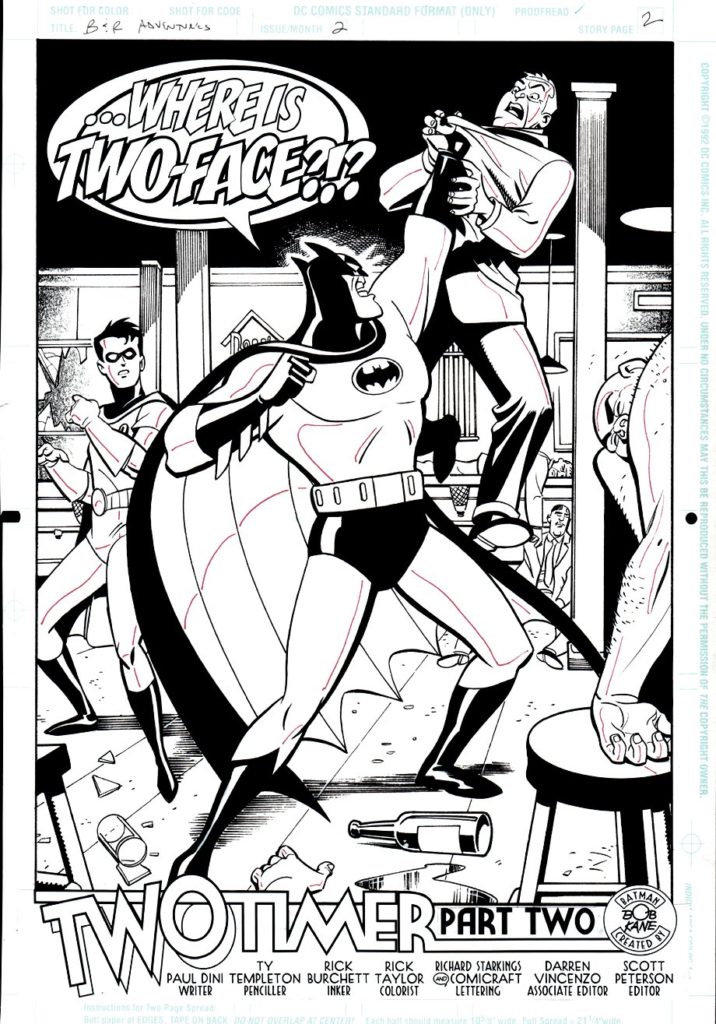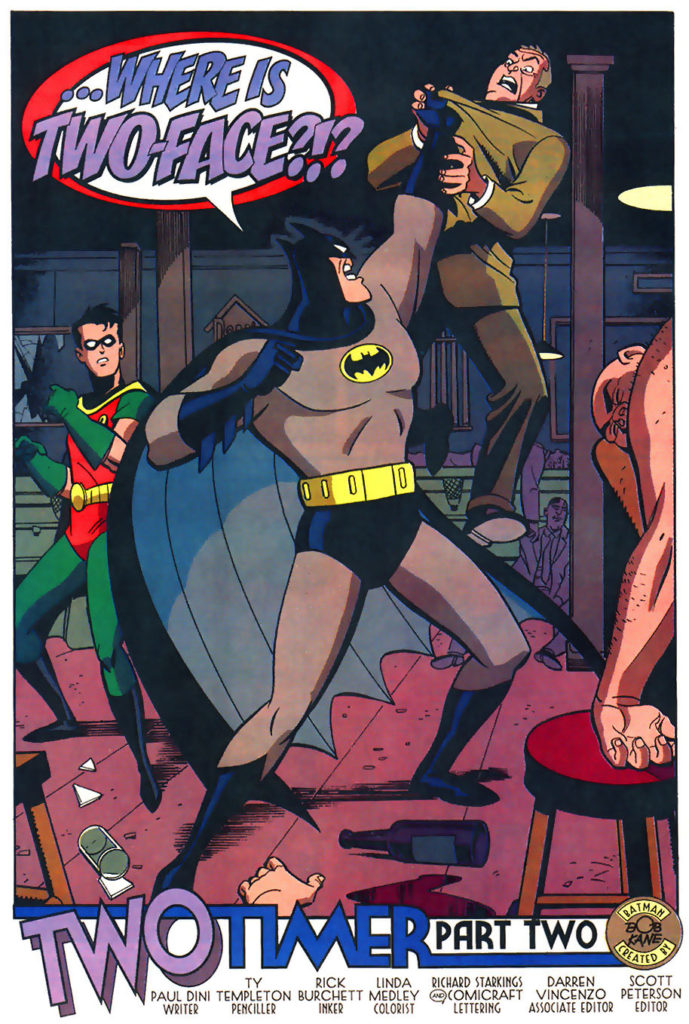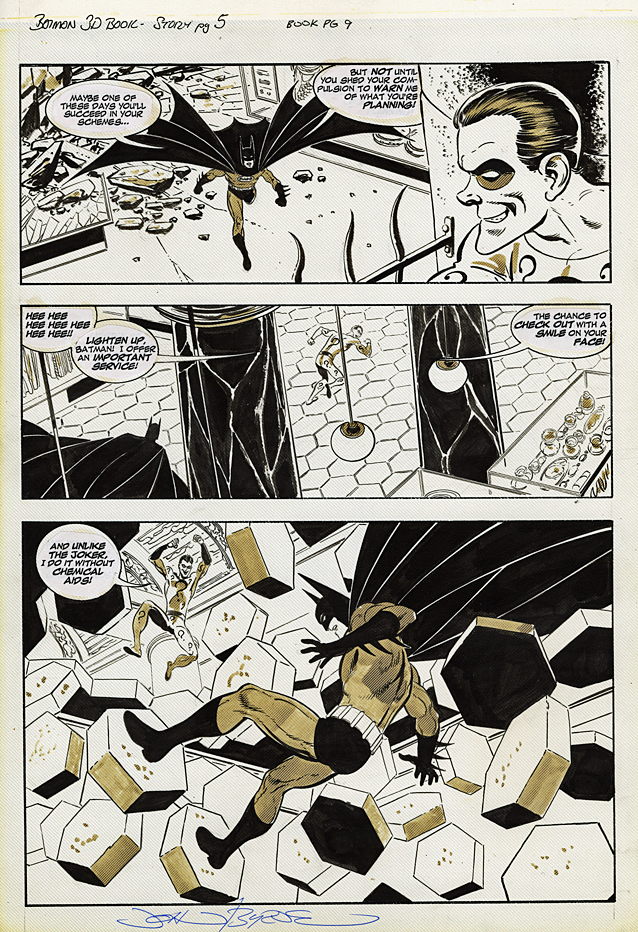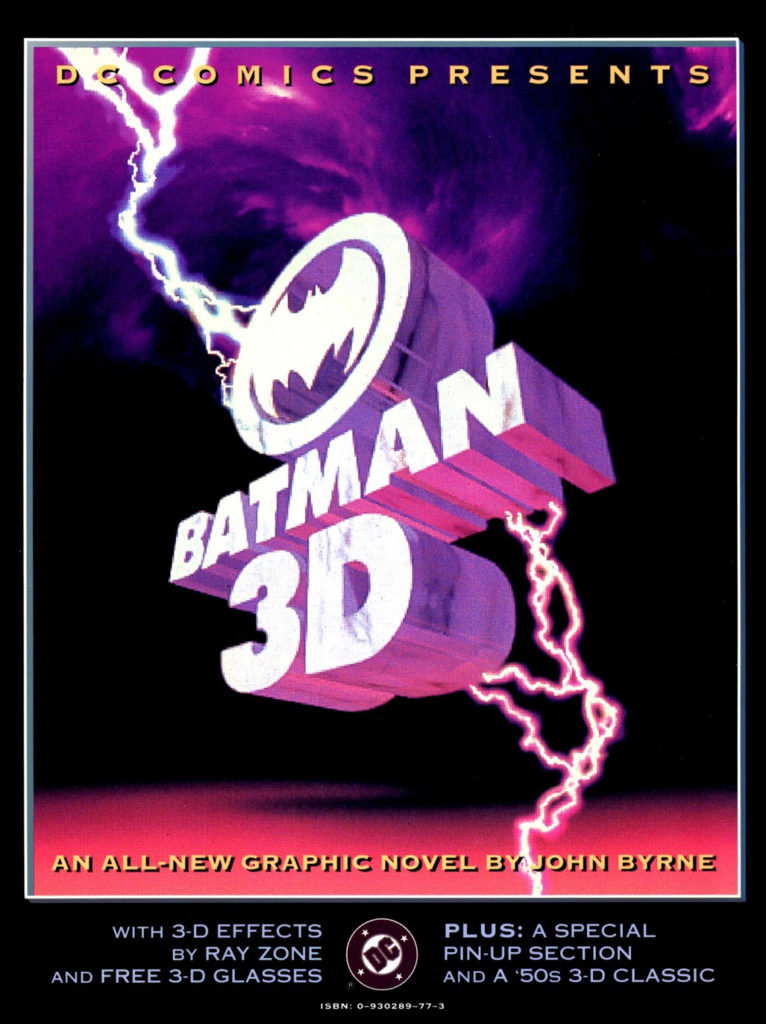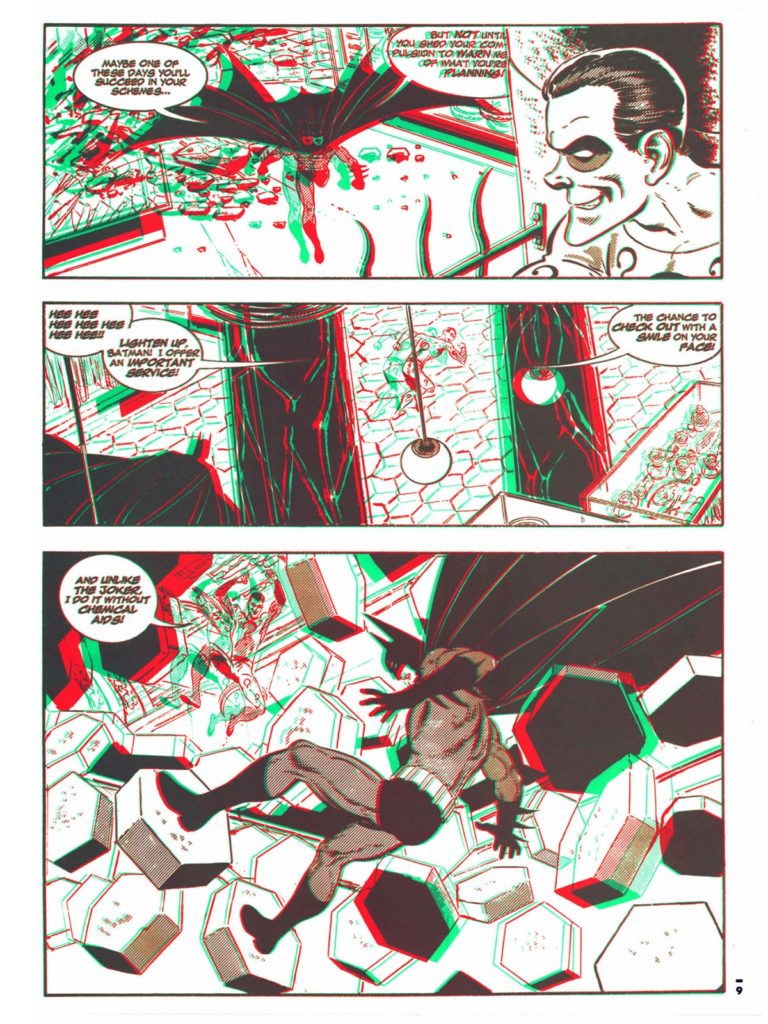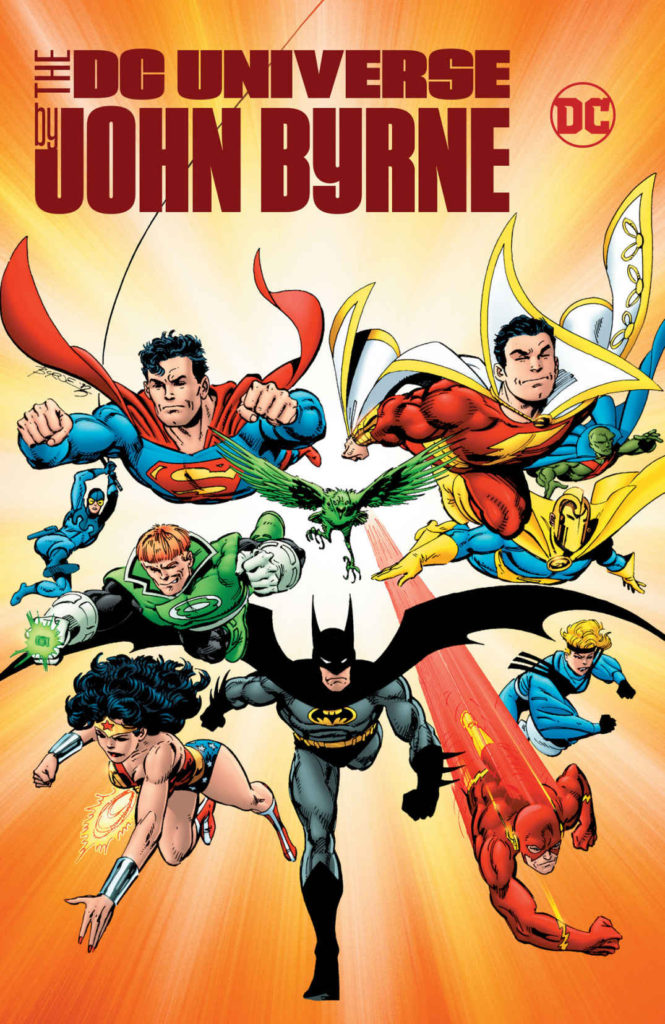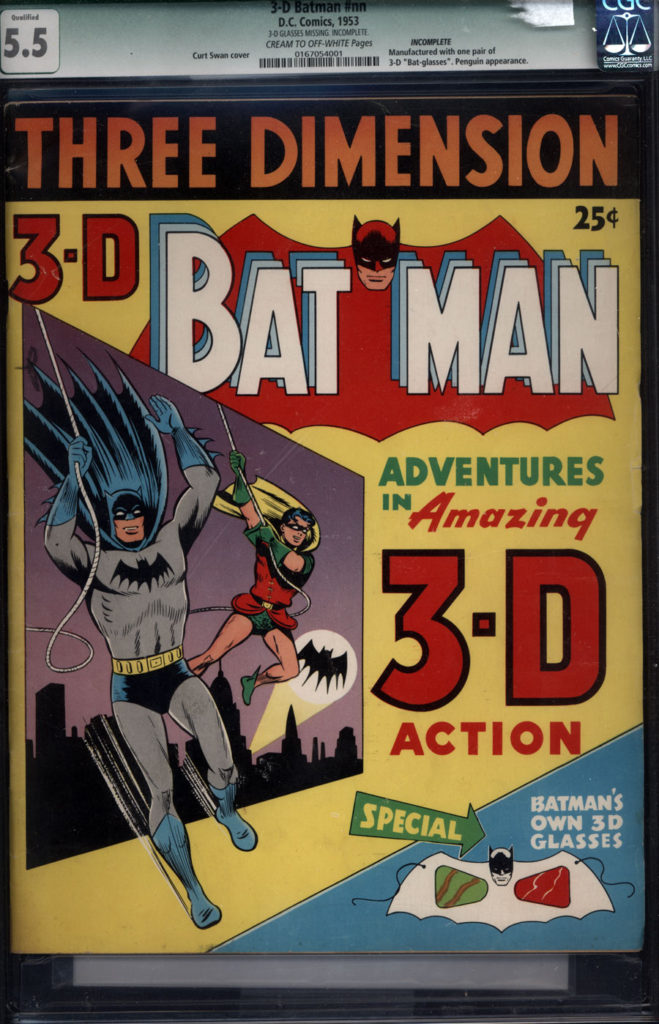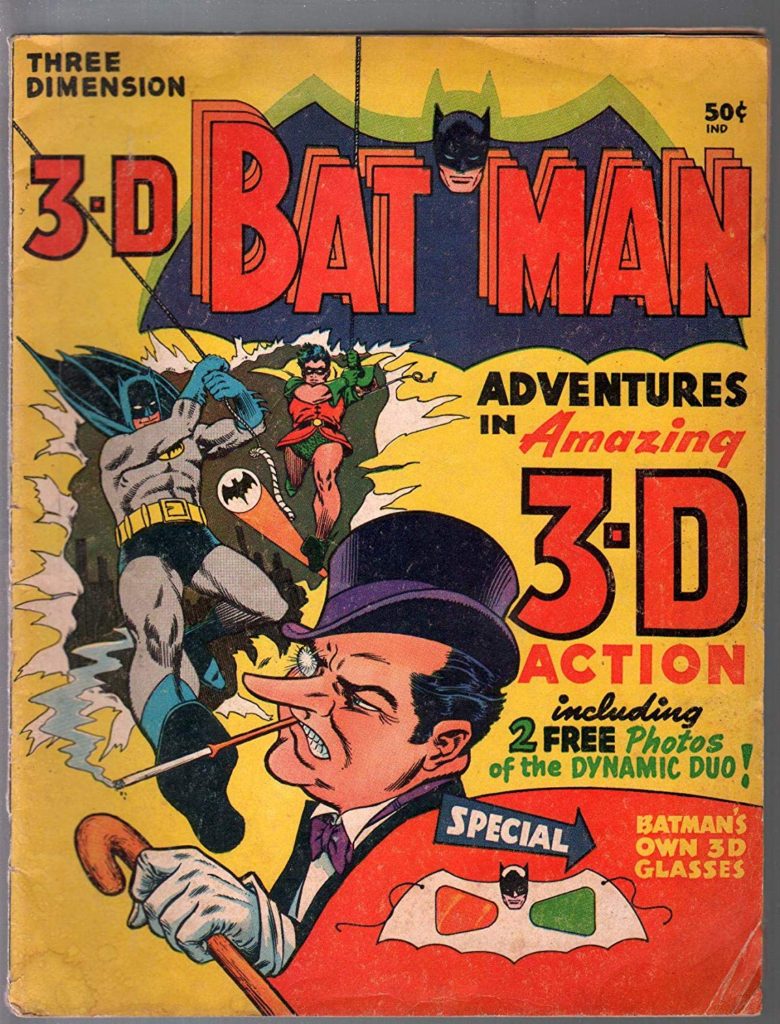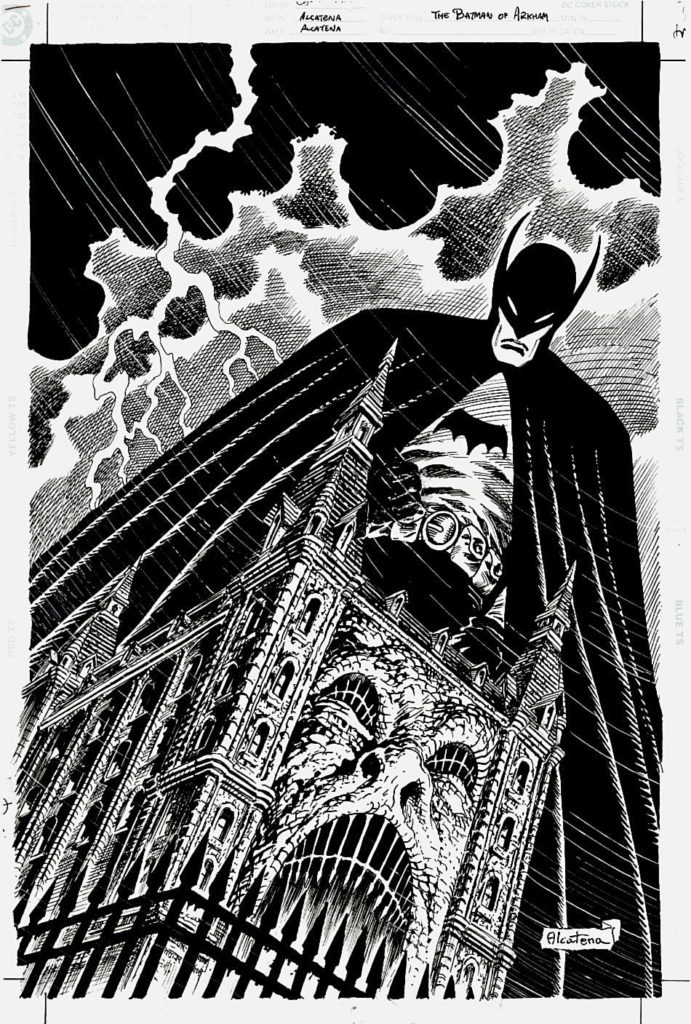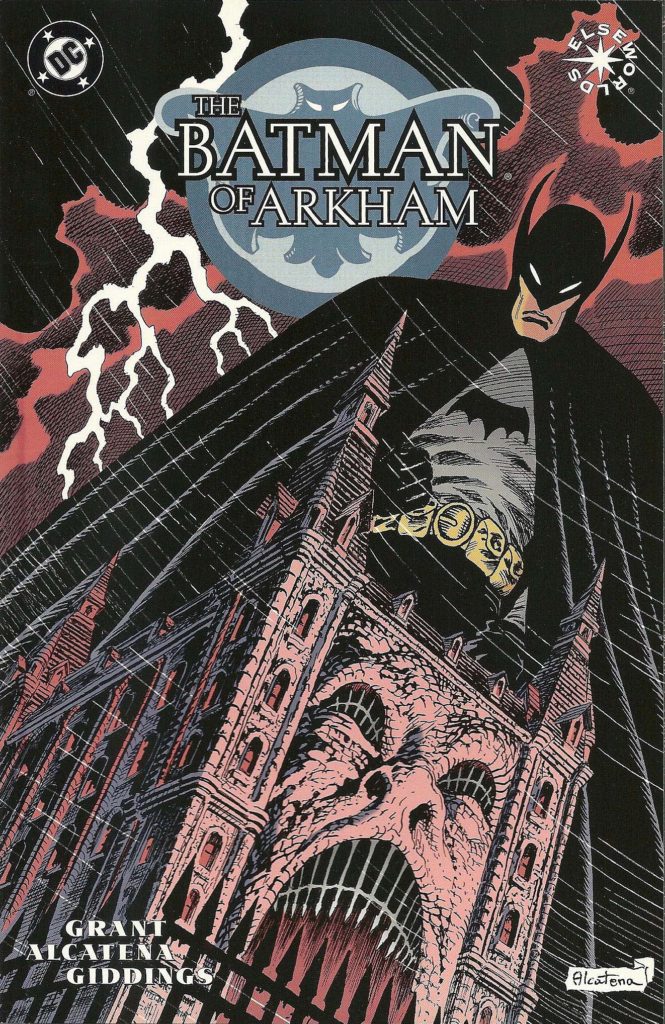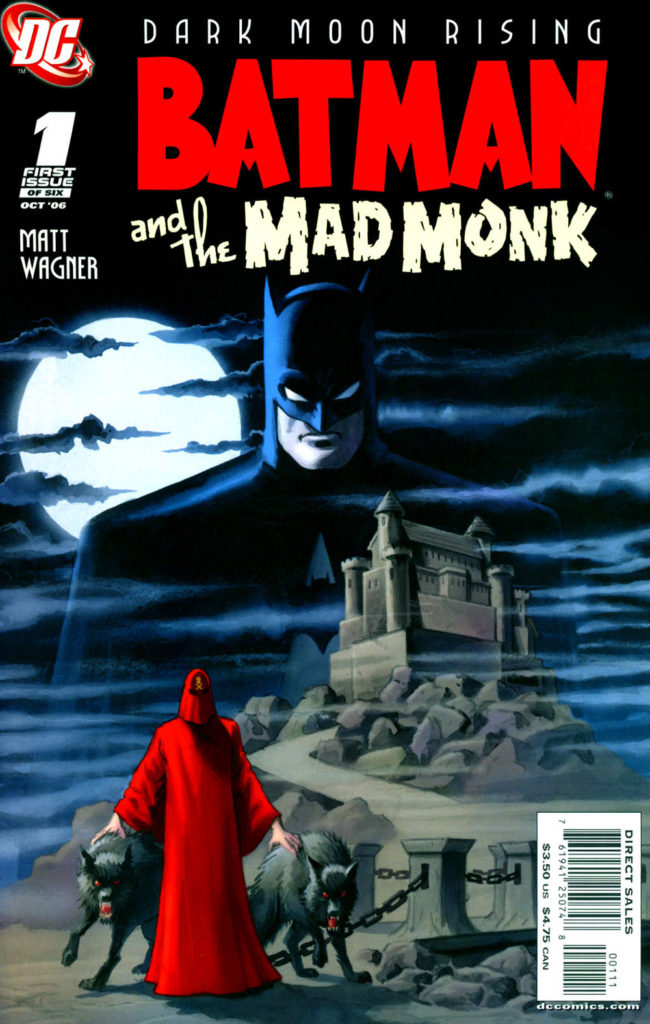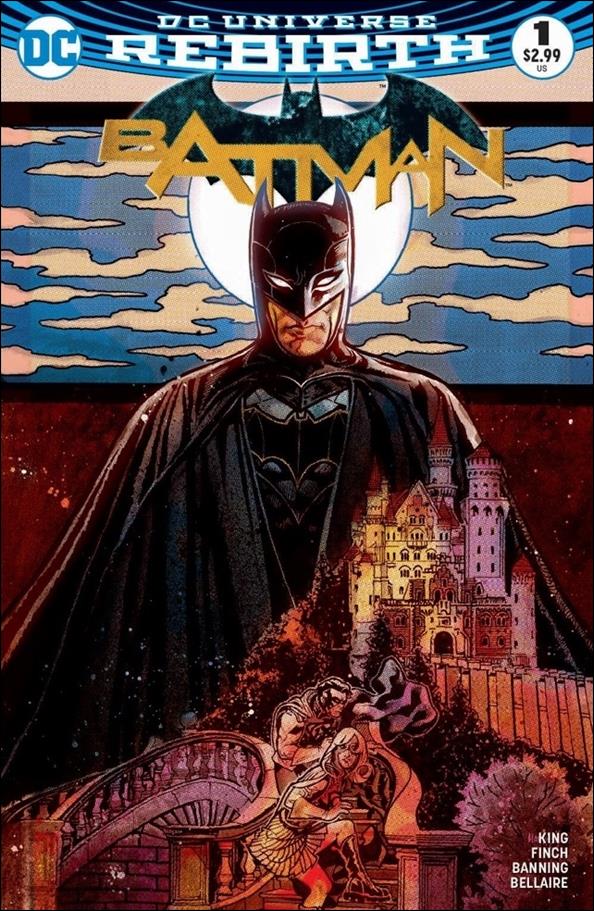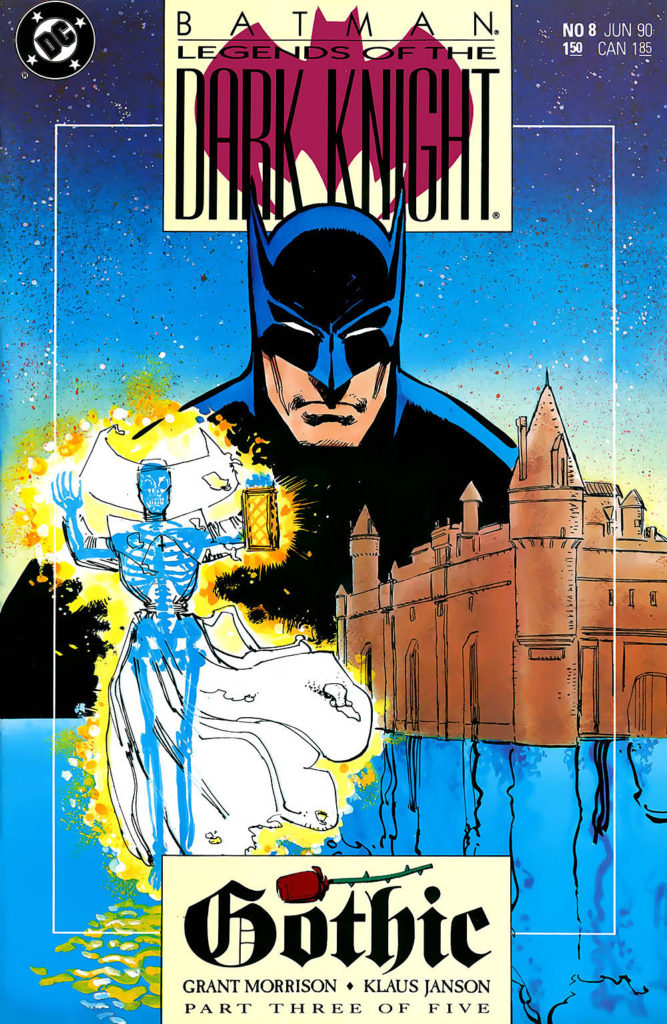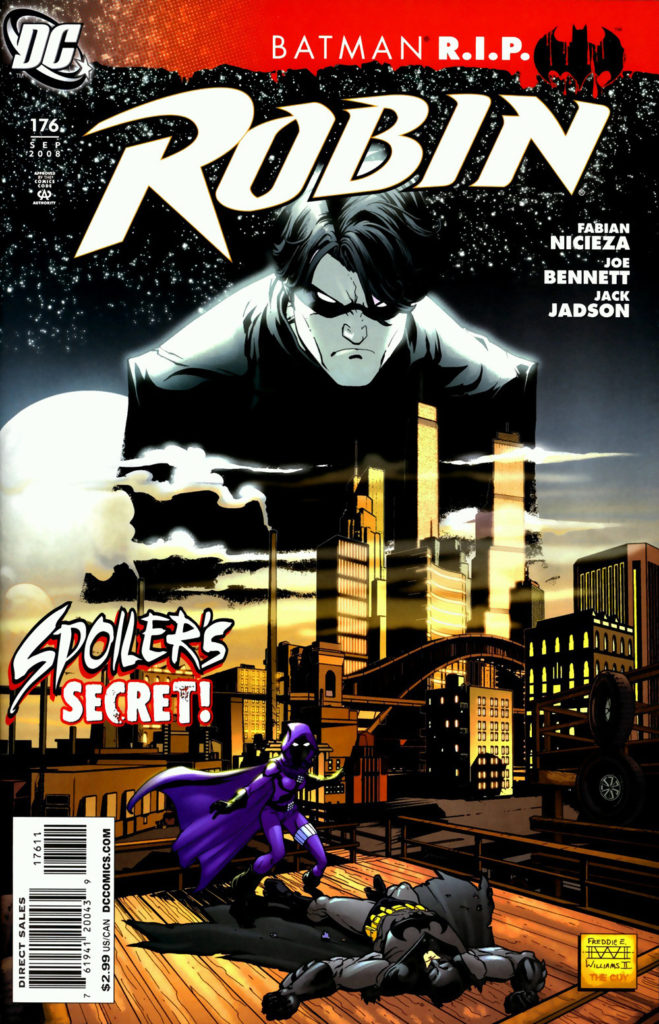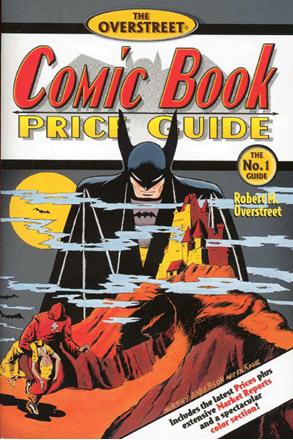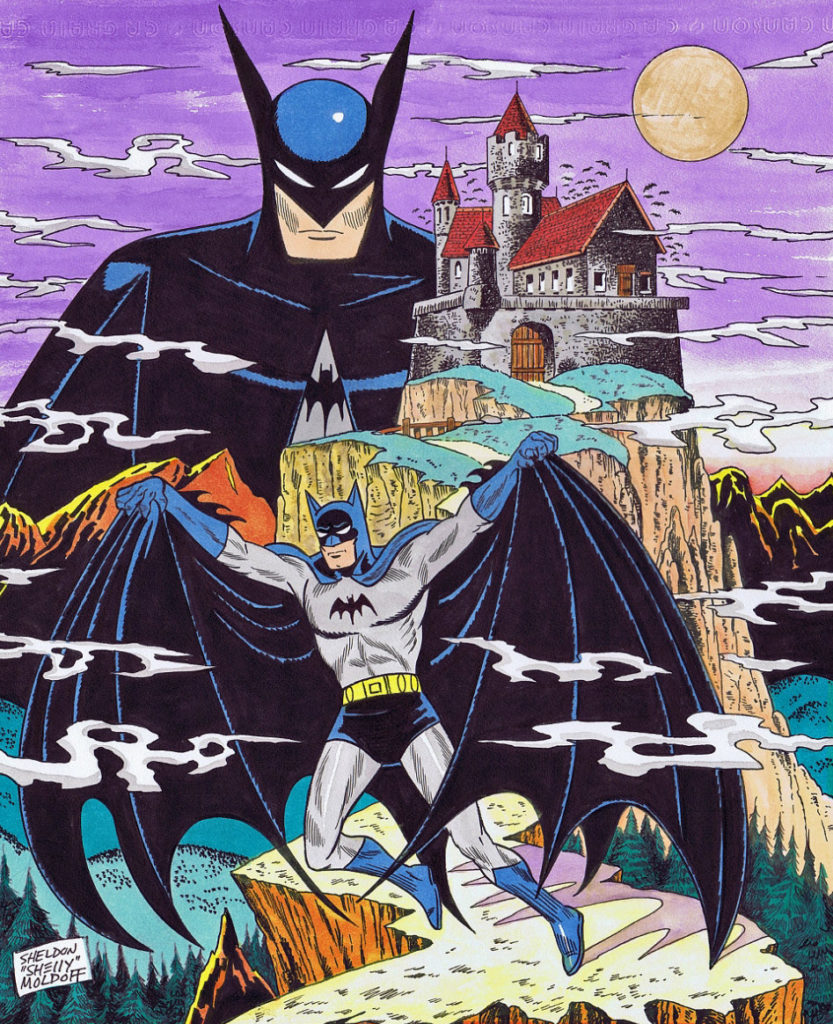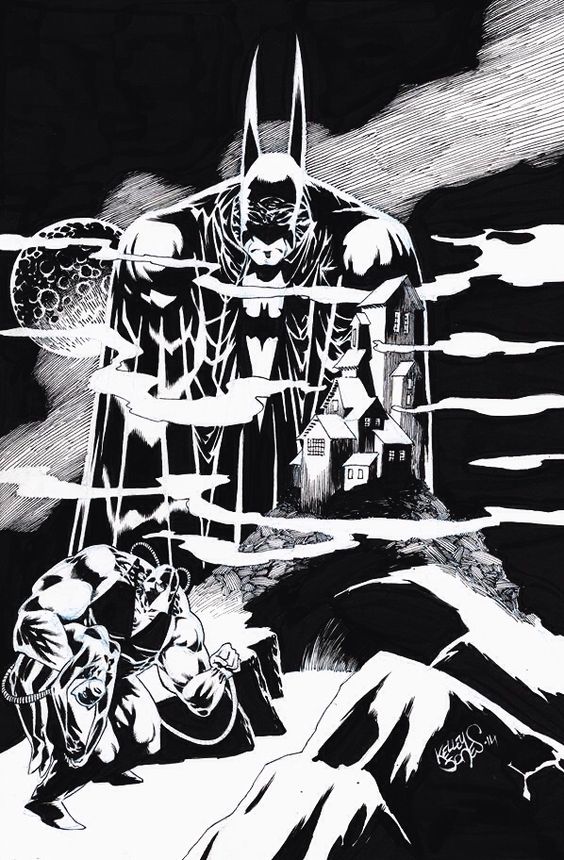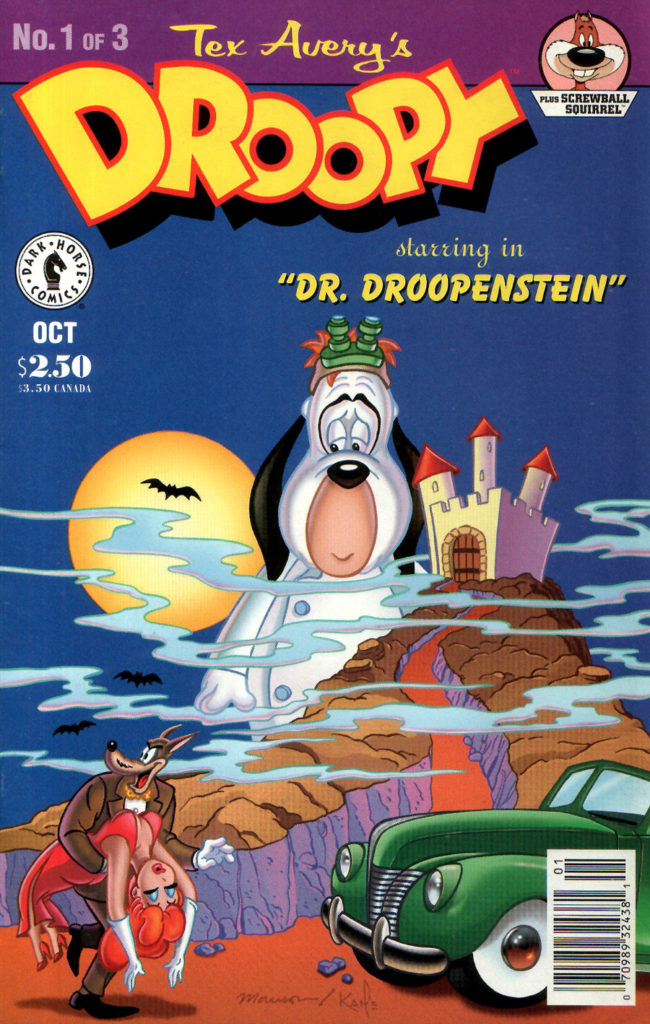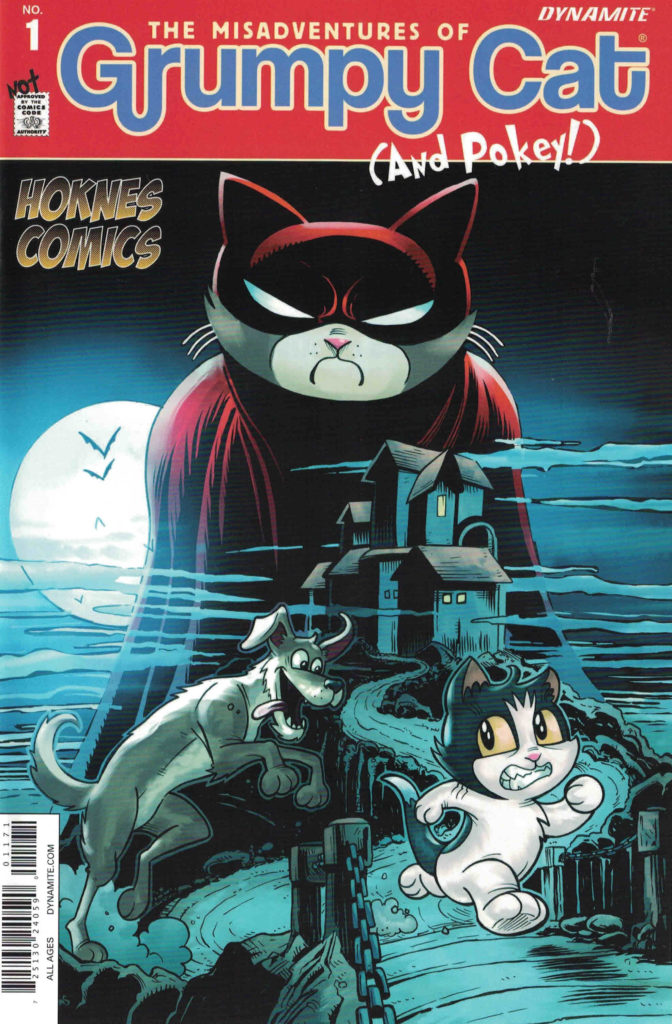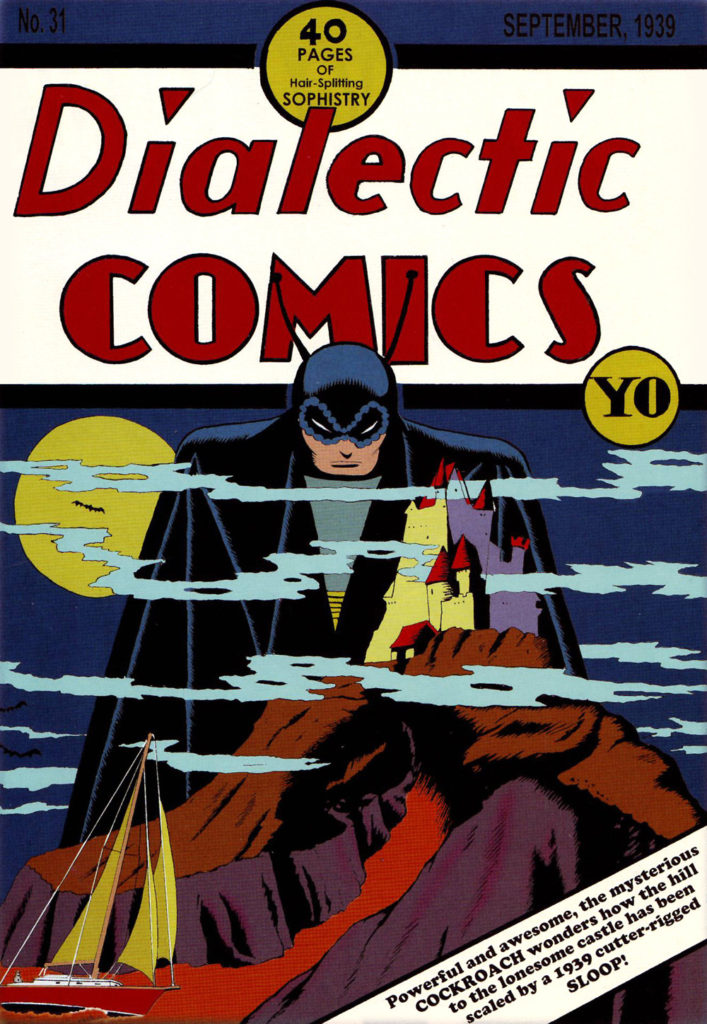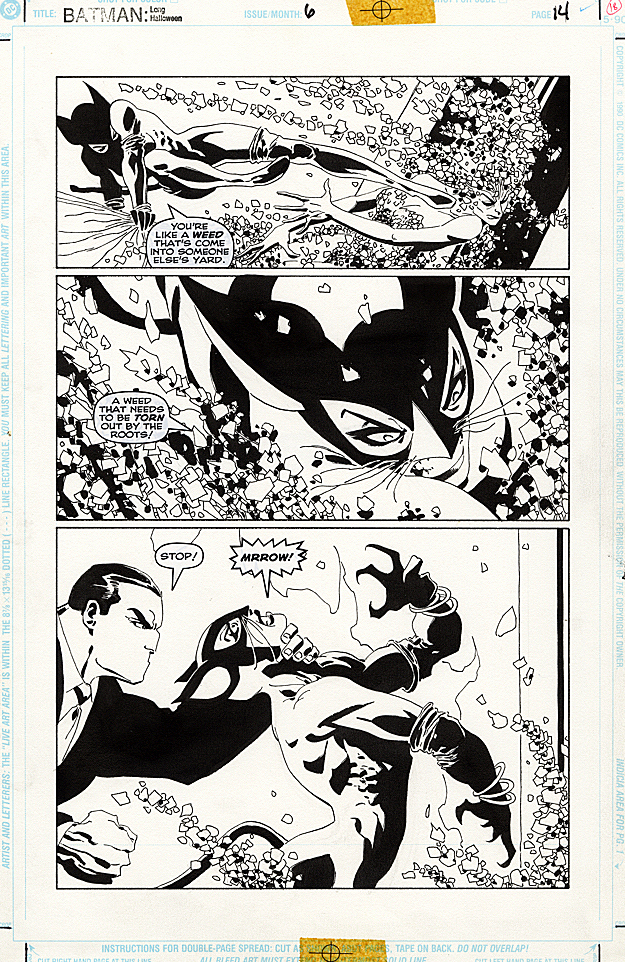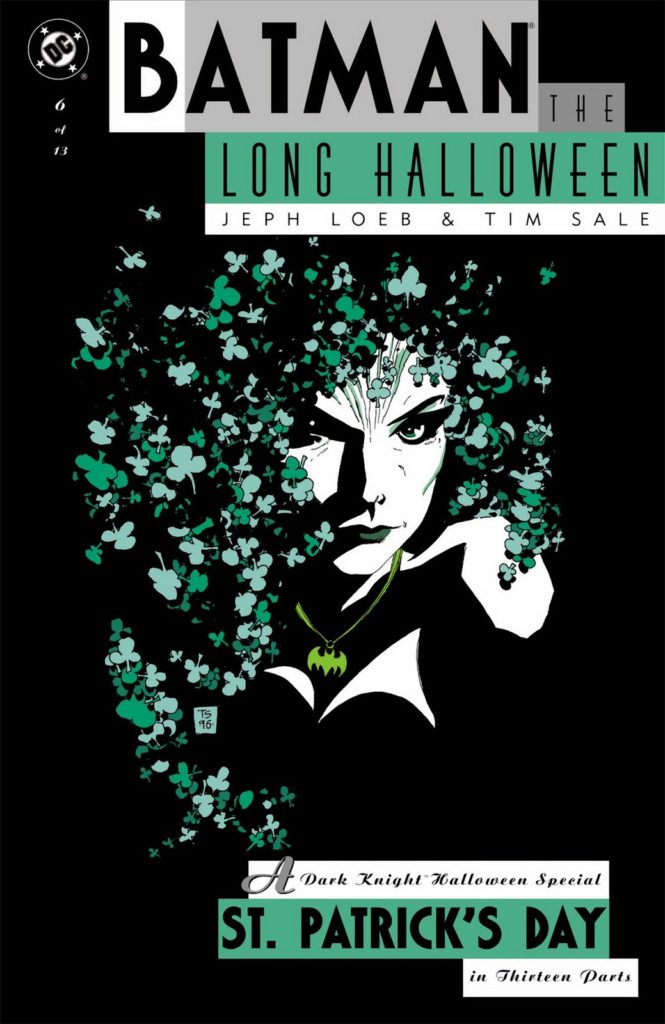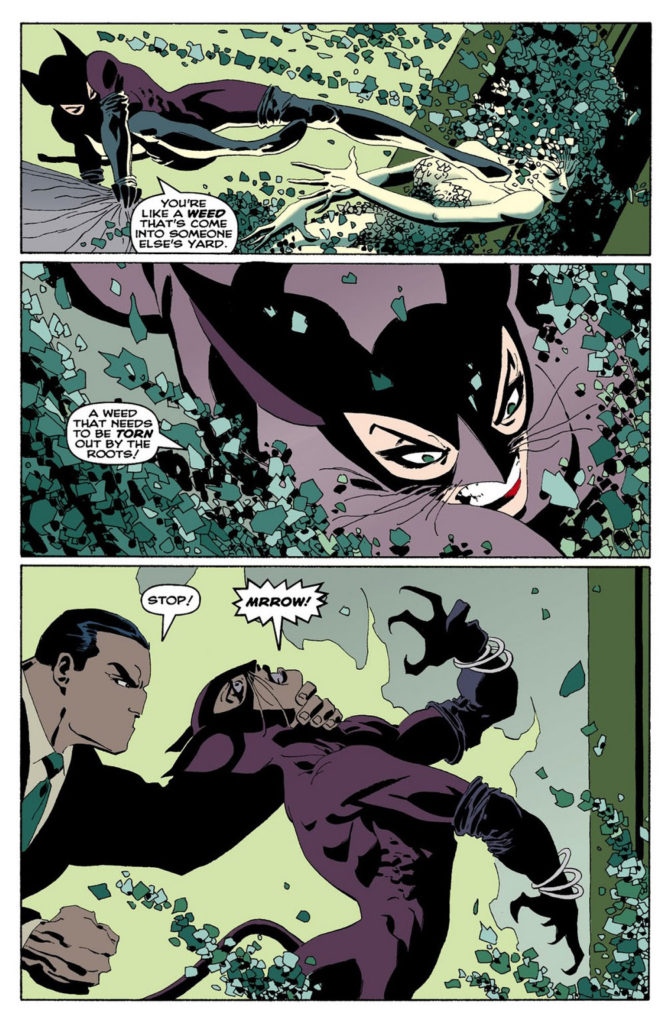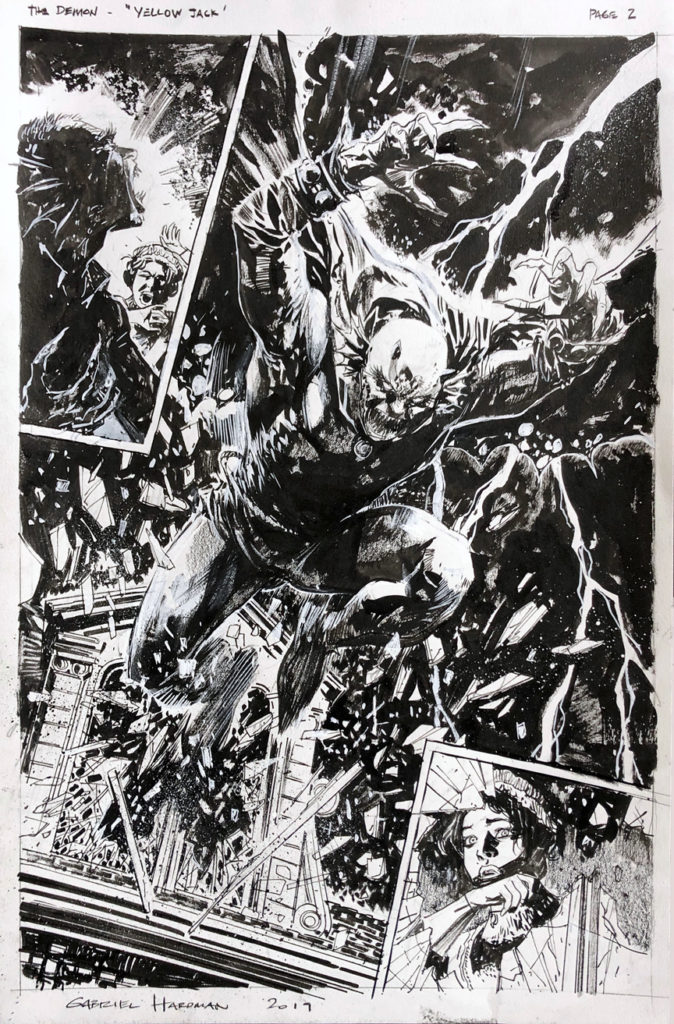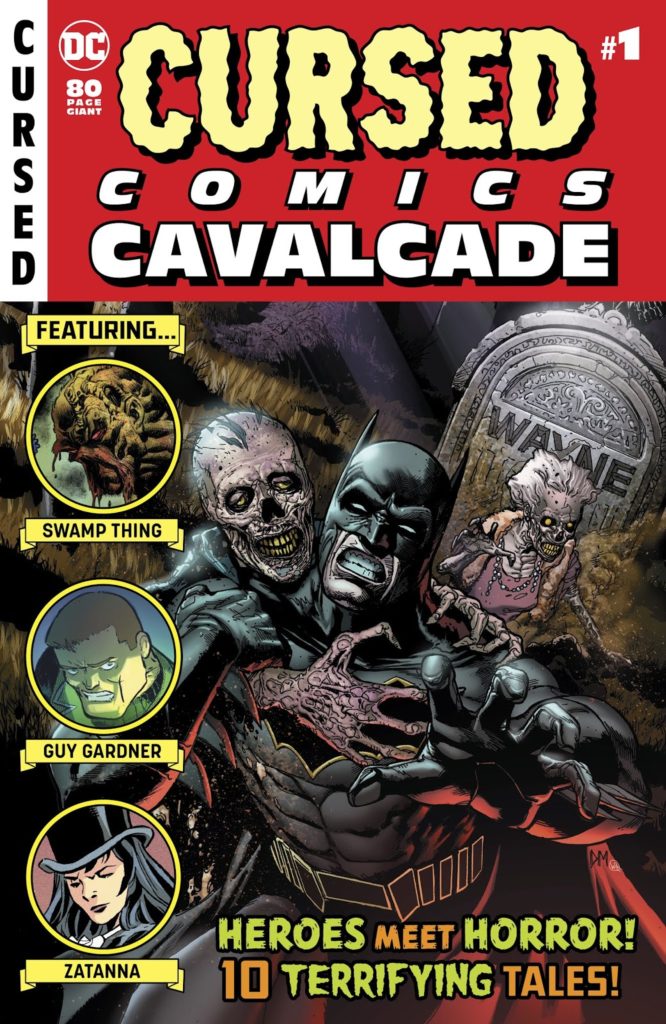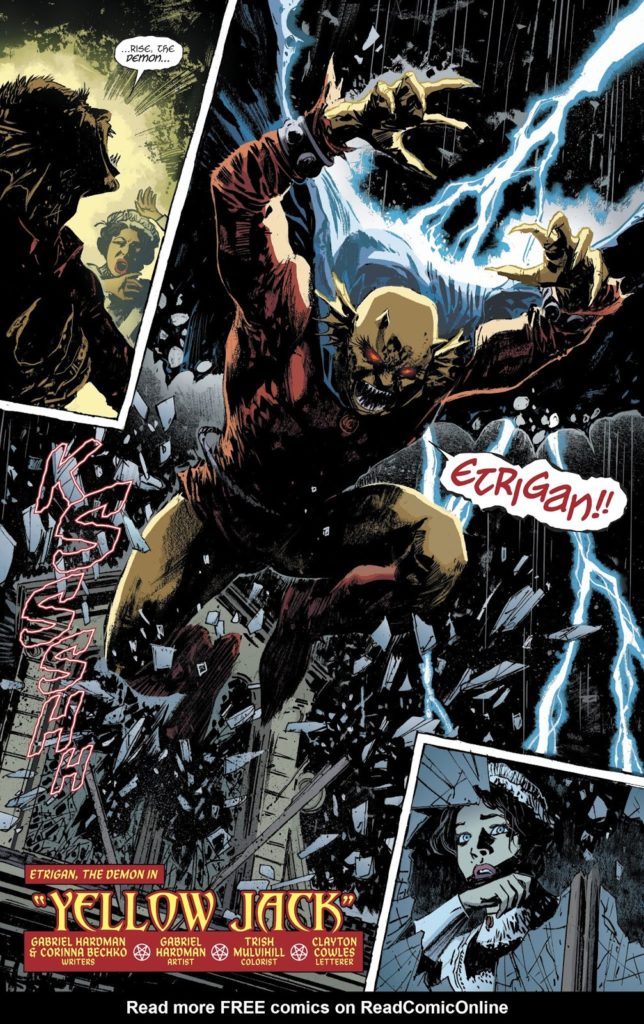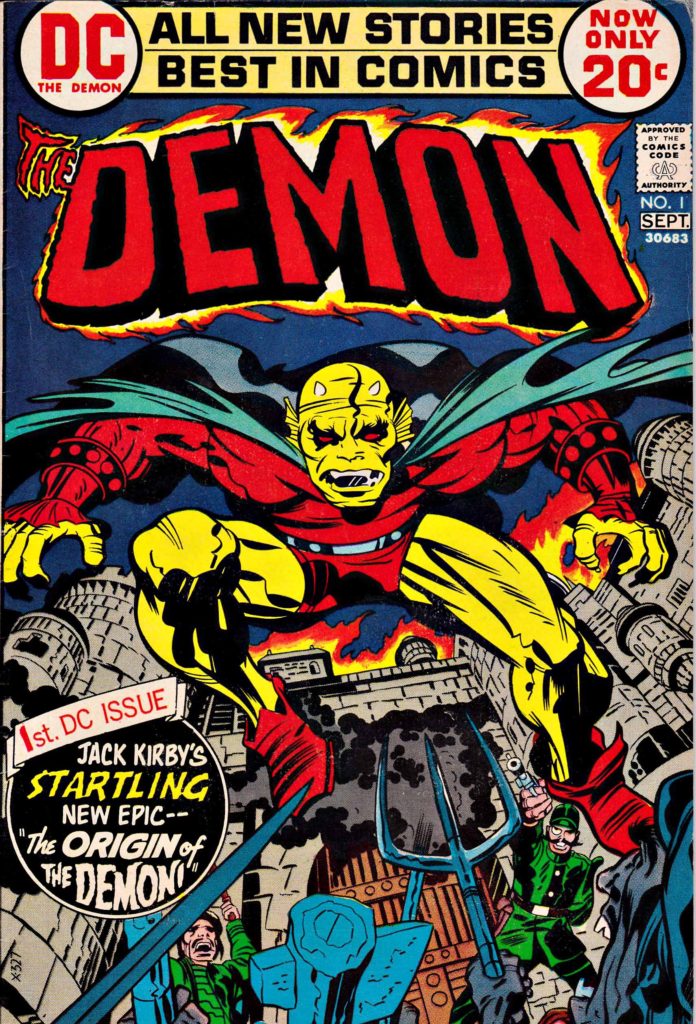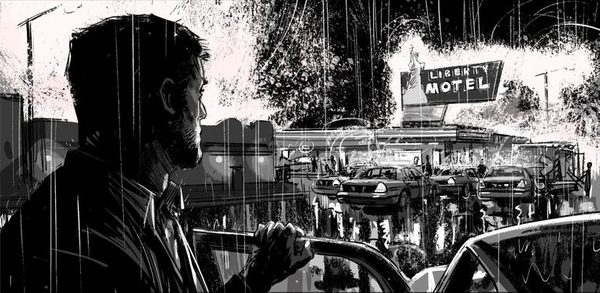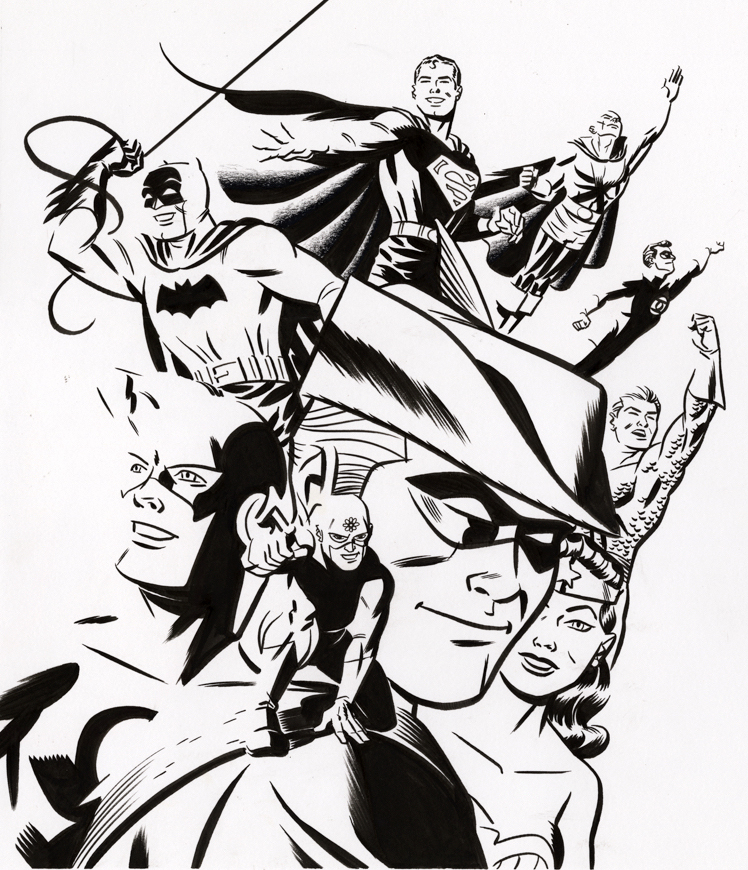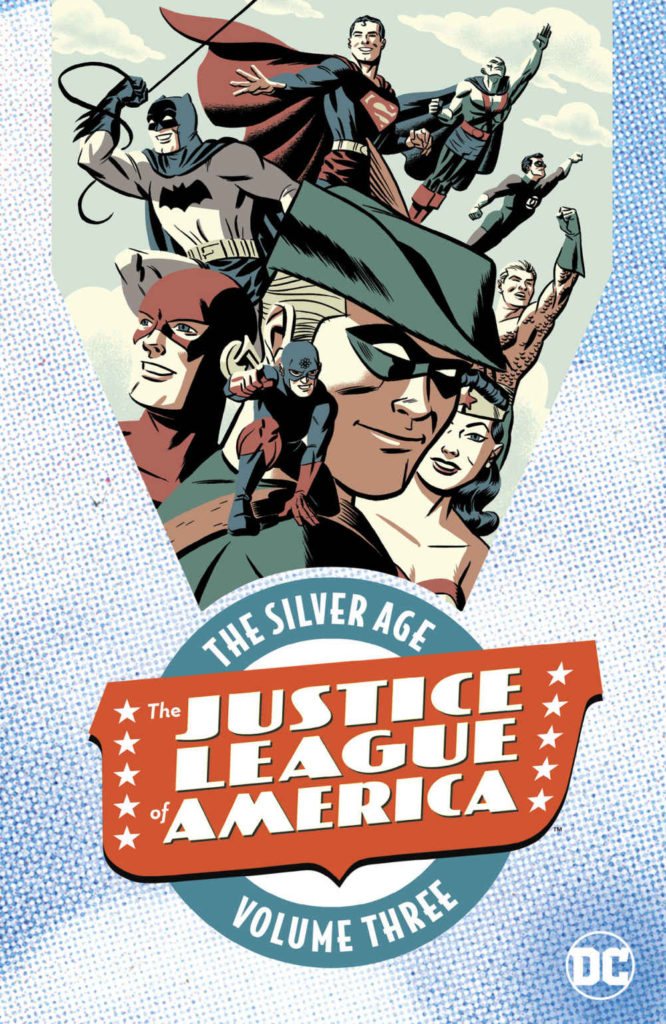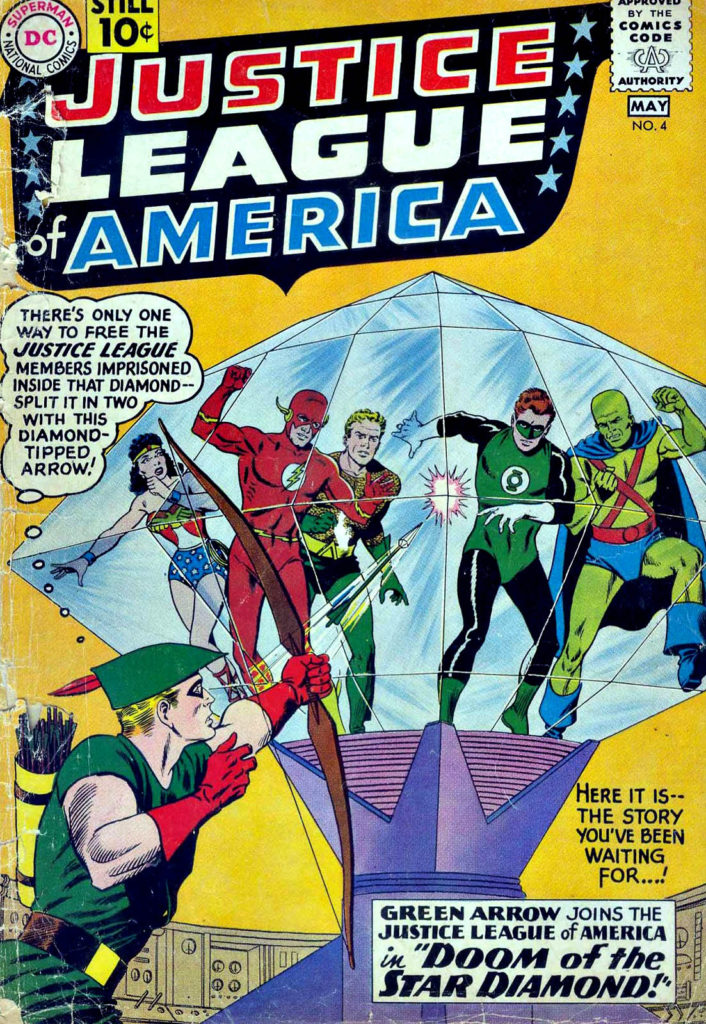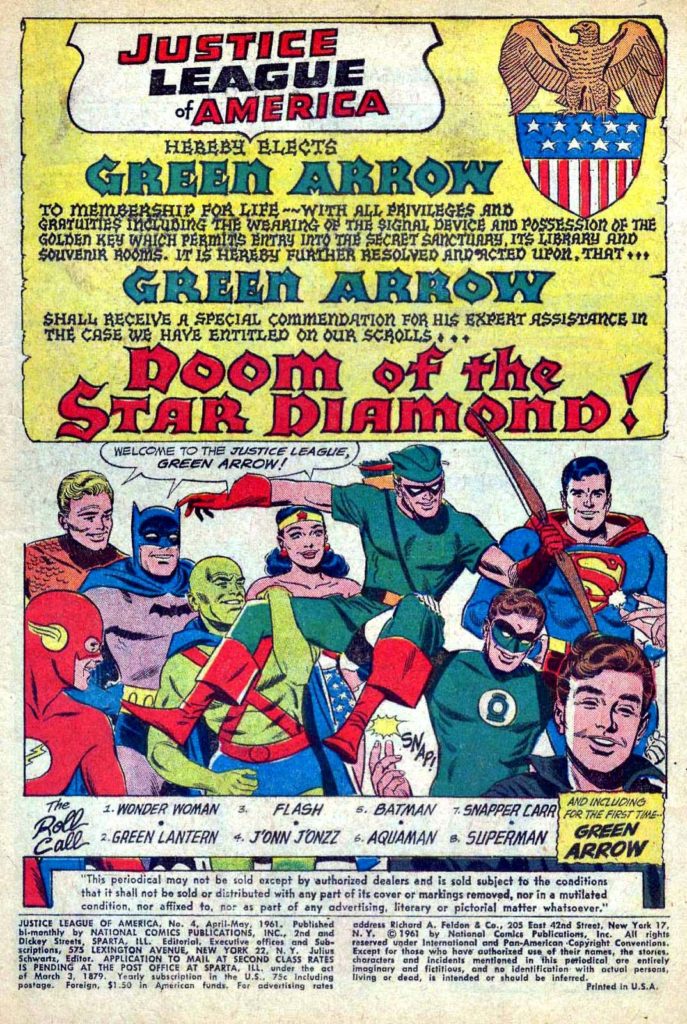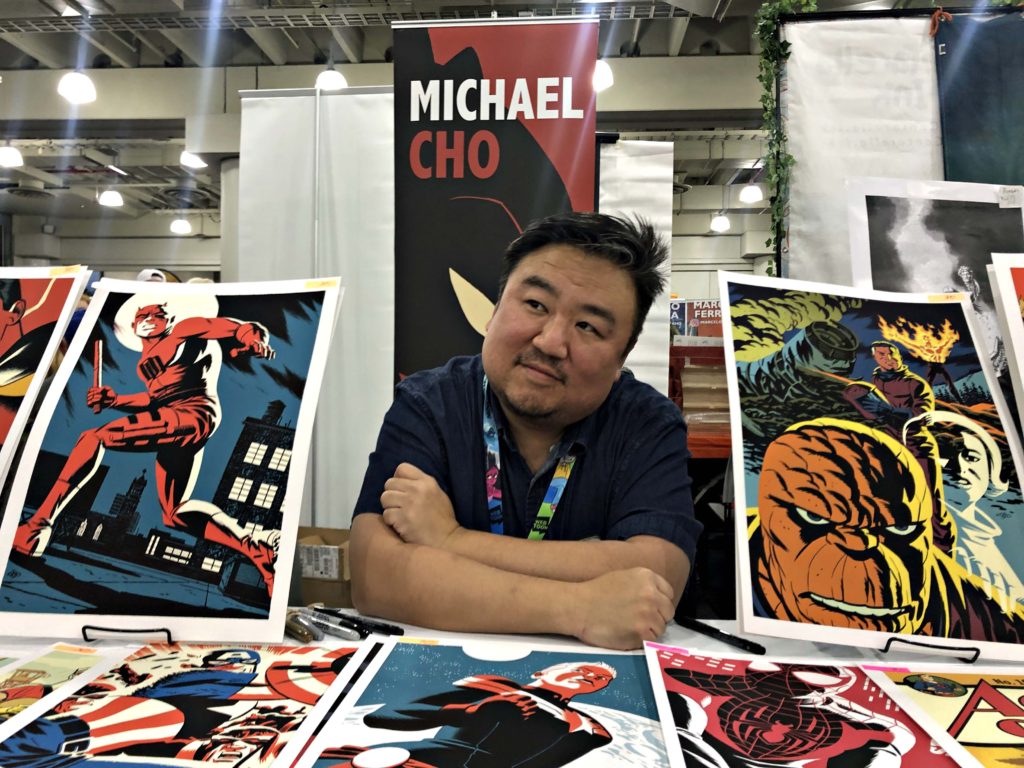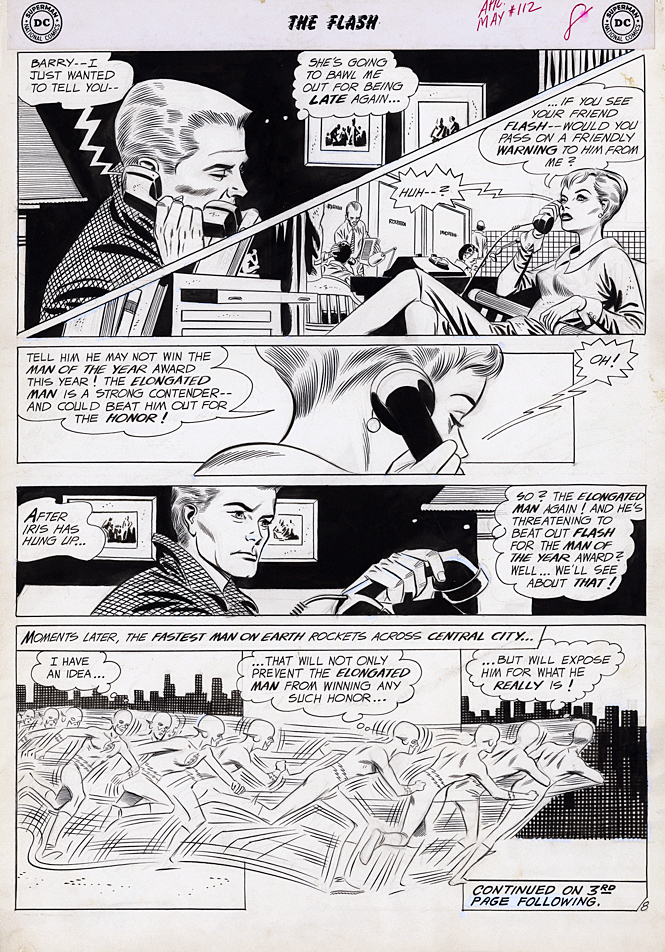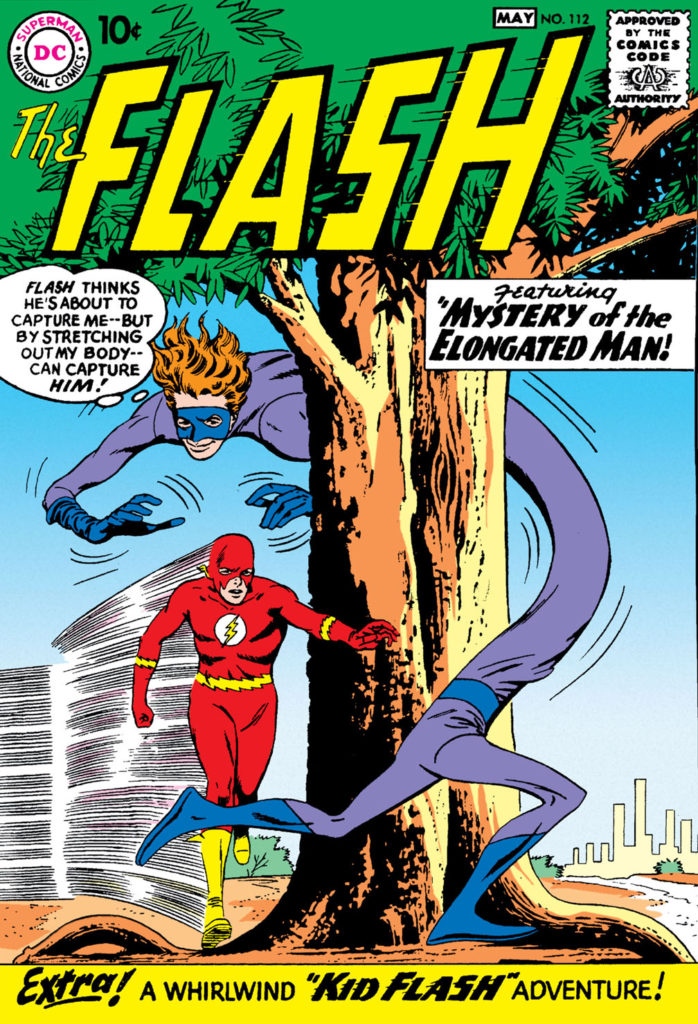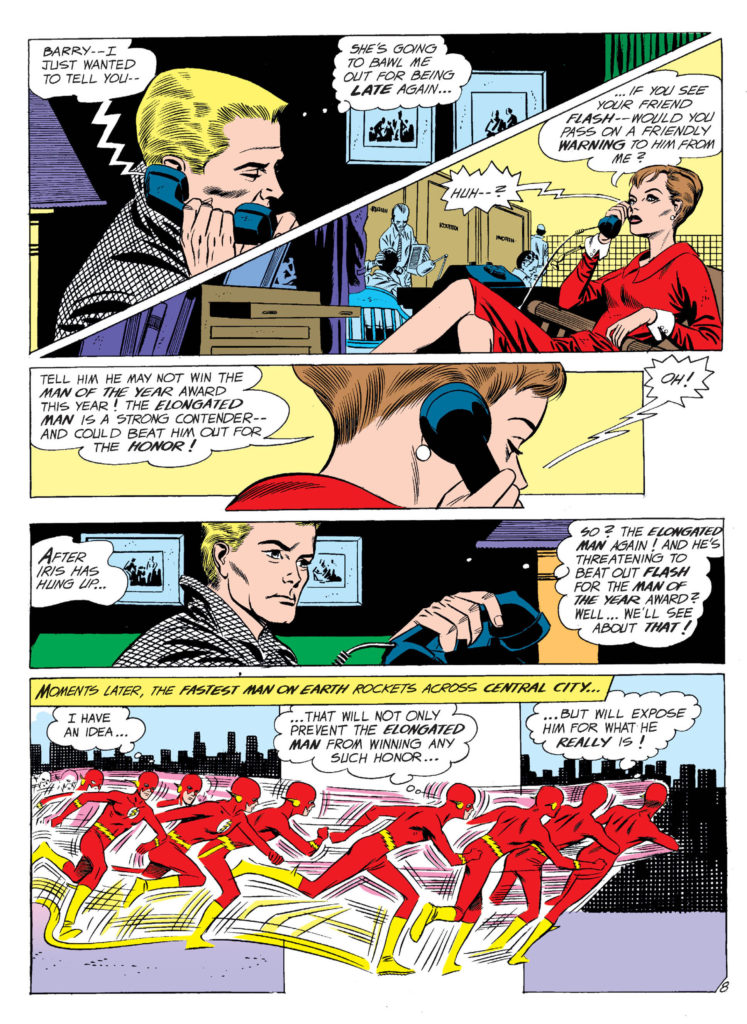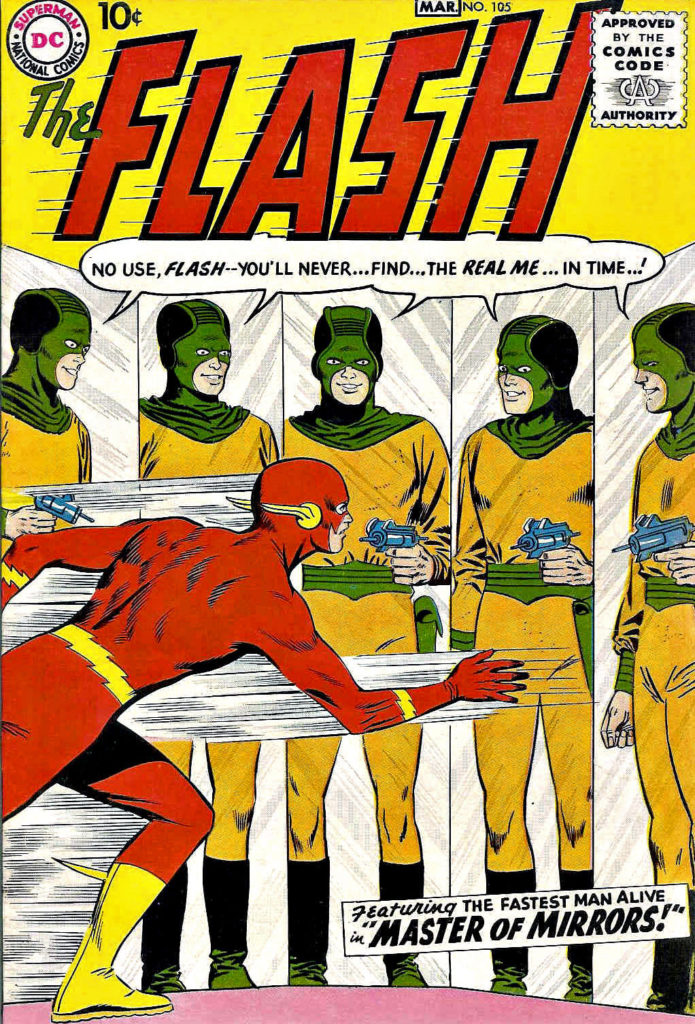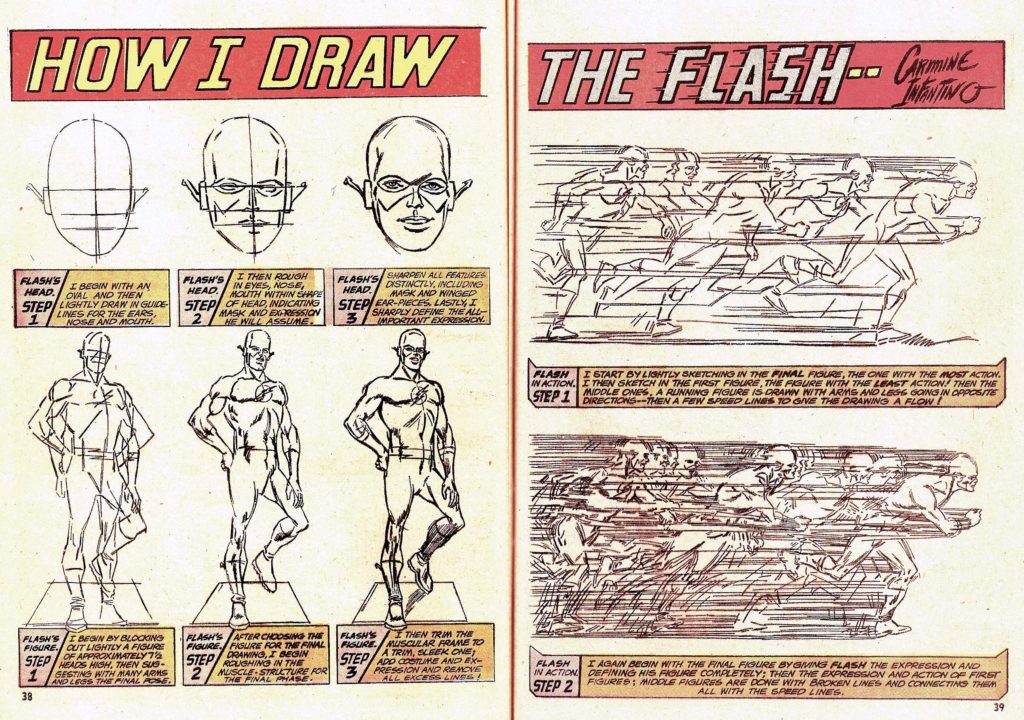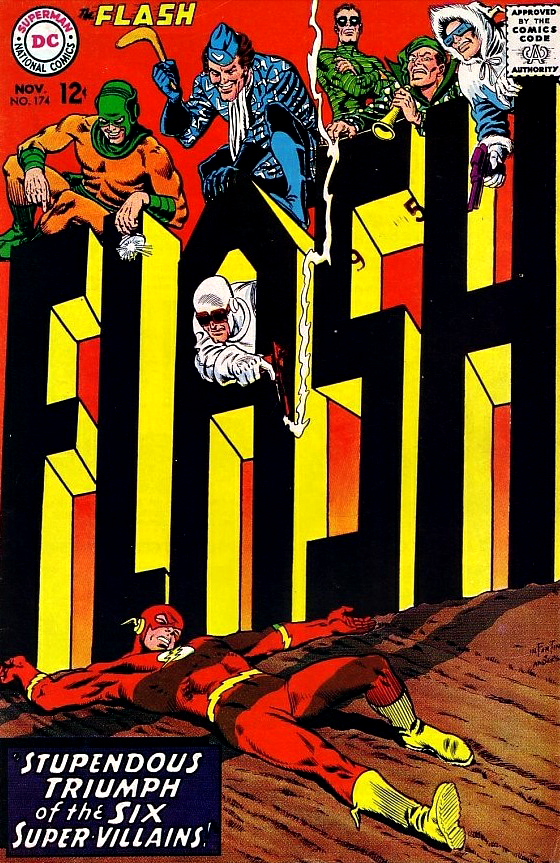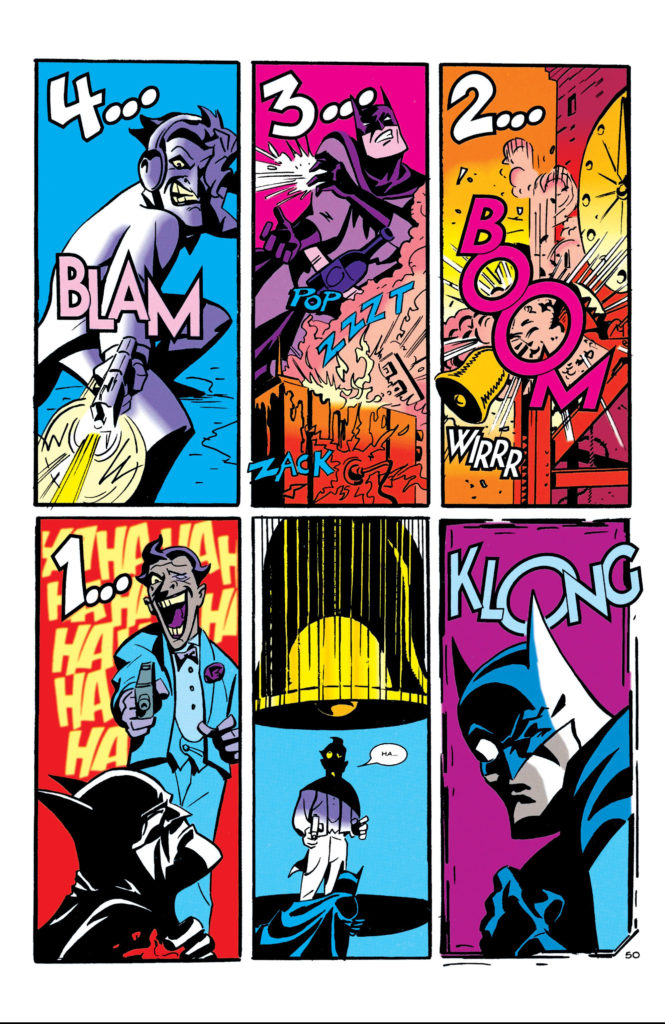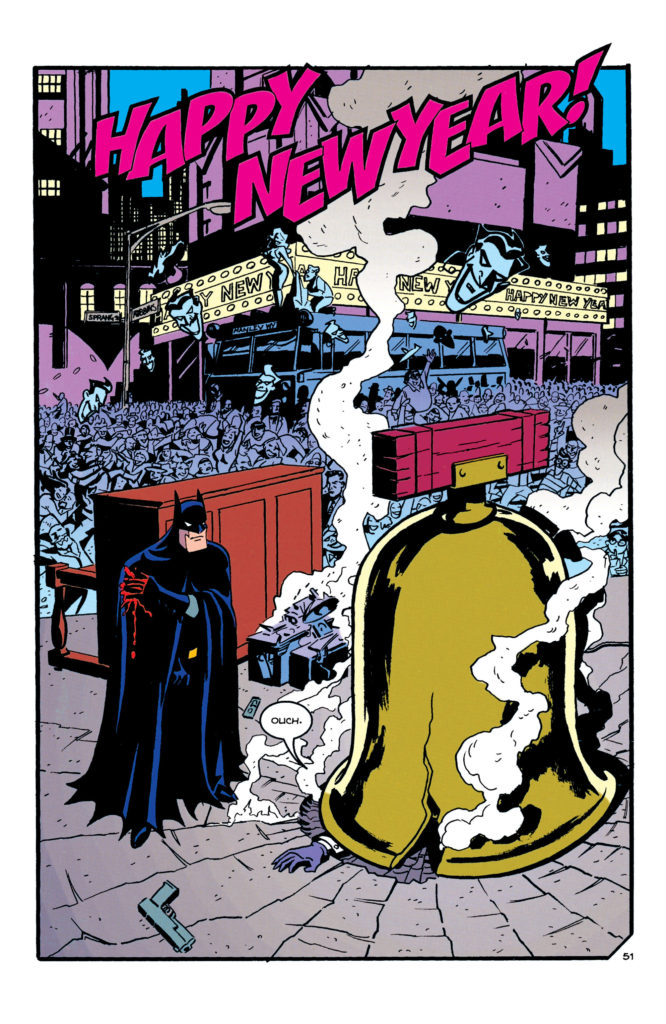Michael Cho — Man Of A Thousand Costumes
Detective Comics #1000, April 2019

Today concludes our special series celebrating Batman’s 80th birthday.
I’m not a child of the ’50s. Didn’t make the cut.
But… I was a little kid in the ’60s when DC published many great 25-cent annuals (80 pages!) and specials reprinting classic tales of classic characters.
Like Batman, for instance.
It was in these annuals that I learned abut Giant Batman, Rip Van Batman, Rainbow Batman and more. I had no idea when these stories first appeared, and I didn’t care. It also didn’t matter that they didn’t quite fit in with the “new-look” Batman. They were goofy fun, and I was a kid, and goofy fun was a job requirement.
I hadn’t thought much about those iterations of Batman in recent years. Many of those stories have yet to be reprinted in the current DC omnibus collections because of, well, pesky chronology.
Then at SDCC, Preview Night, Michael Cho’s art representative put this original of Detective #1000 on display while I was chatting with him.
It floored me.
Michael captured so many of those wondrous Batman moments in one stunning and giant (Its drawn on a double-size board) original. And as noted previously, I’m a passionate admirer of his art.
I asked the price. The dealer answered. I gulped. My art budget would be shredded.
But I understood the pricing — it’s obviously a one-of-a-kind piece. A classic cover for a milestone comic book.
I hesitated for one millisecond. And then I was smart enough to say: “Yes, I want it.”
Good thing too. Turned out there was another buyer literally right behind me. (Typically, I’m the collector who just misses out, so this was unusual.)
I confess that I didn’t recognize ALL the Batmen on the cover at first. (Some of course are covered by the final trade-dress.) But fortunately, with Michael’s help, it’s now sorted out:
17 visible front-facing Batmen surrounding “Conventional” (Regular? Traditional?) Batman and Robin, and seven additional Batmen with a back view to the reader. Below is the complete list, with the original appearances noted as well. The art gallery features the original covers, as wells Michael’s preliminary art, created digitally.
These are not all the odd versions of Batman. Michael himself laments that he couldn’t fit in Batman Jones (Batman #108) or Batman Creature (Batman #162), and a few others, but hey, there’s only so much room.
As for Invisible Batman? (Detective #199.) Who’s to say he’s not also on the cover somewhere? I’m certainly not ruling it out.
Detective 1000 by Michael Cho:
- Front view (17):
- Jungle Batman – Batman 72
- Rainbow Batman (full) – Detective 241
- Mummy Batman – Detective 320
- Giant Batman (leg) – Detective 243
- “First” Batman (Thomas Wayne costume) – Detective 235
- Alien Batman (weird face & body) – Batman 140
- Alien Batman (orange ears) – Detective 251
- Bat-Baby – Batman 147
- Genie Batman – Detective 322
- Swindle Batman – Detective 222
- Captive Planet Batman (weird helmet) – Detective 256
- Rip Van Batman – Batman 119
- Scuba Batman – Detective 253
- Robot Batman – Detective 239
- Dragon Society Batman (tunic with #1) – Detective 273
- Scottish Batman (kilt bottom) – Detective 198
- “Original” Batman (cape open like wings) – Detective 195
- Back View (7):
- Bronze Batman – Detective 302
- Clayface Batman – Detective 312
- Zebra Batman – Detective 275
- Interplanetary (space helmet) Batman – Detective 165
- White Snow Suit Batman – Detective 165
- Luminous (radiation) Batman – Detective 165
- Rainbow Batman (pink) — Detective 241


